Mercedes is today's F1 and Toto Wolf is its captain. They have eaten everyone's breakfast. They have created an invincible war machine, the perfect car, the unbeatable car, the best ever, driven by an unsurpassed driver. They have dominated the hybrid era from start to finish, showing speed and reliability never before seen in history. Contrasting this with the worst Ferrari ever, you get the result of the longest era of domination by a team and a driver in F1 history. More than Ferrari, more than Schumacher, more than anyone else. The rest is history. As in Formula 1 you don't win by chance.
The 2021 Mercedes F1 is the peak of this supremacy: it is the fastest and most advanced car of the hybrid era, which ends at the end of 2021. It is therefore the fastest car with the best engine in F1 history of all time.
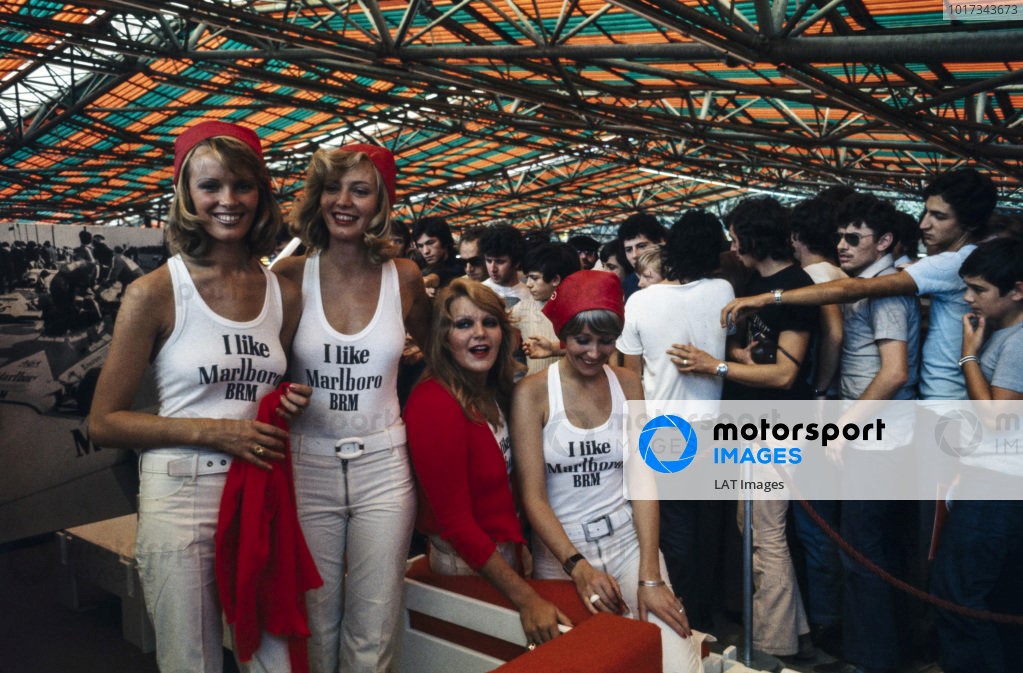
Formula 1, Jarama circuit, Sunday, April 28, 1974. Marlboro girls.
With the conclusion of its hybrid era, F1 sees coming to an end its long merit-based parenthesis, in which the best driver and the best car won and the cars were still different from each other. The most technical and fascinating F1 cars ever produced were born in the hybrid era. With expensive but highly evolved power units. And to hell with the lack of noise.
From 2022 a whole other story begins, daughter of this time that is eliminating one by one all the excellences of the world in the name of a constant and very fast flattening down. A vertical descent of the cultural and intellectual level. The loss of seriousness, reliability and friendship, which were the founding values of F1, in the name of an unbridled, unfair and unrestricted individualism.
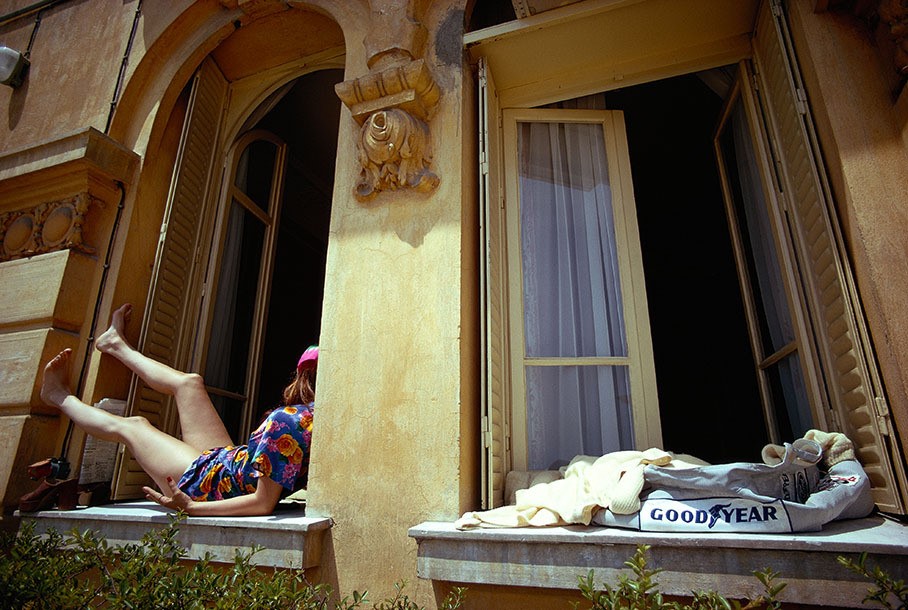
1973 Monaco Grand Prix. Christina de Caraman-Chimay relaxes in the sun while her boyfriend, Francois Cevert, takes a shower after a practice session, leaving his overalls to dry in the sun. Photo by Rainer Schlegelmilch.
F1 was the last bastion of a fabulous world that no longer exists. In 2021 we have therefore seen the best cars ever - children of development and technological competition between the teams - and the last races of the old F1. From next year, F1 seems to be heading towards a sad one-make championship, full of silly rules that have nothing more to do with car racing. And the drivers, who are still a true excellence, will be champions of bumper cars, racing on boring and all the same circuits in the name of safety and of a feel-good and pietistic world that is exactly the opposite of that of romantic F1. Mercedes, Toto Wolf and Lewis Hamilton will remain eternal undefeated like the last dinosaurs and will be the last to be able to give of the you to the champions of the past. From 2022 there will therefore be a new beginning, another sport.
Introducing W12, the Mercedes F1 Challenger for the 2021 season! The Mercedes-AMG Petronas F1 Team unveils its 2021 car, as excitement builds for the new Formula One season…
Just 12 weeks after the chequered flag fell on the 2020 Formula One season, the Mercedes-AMG Petronas Formula One Team has officially revealed its challenger for the 2021 season. The Mercedes-AMG F1 W12 E Performance is presented today in the brand-new Race Bays at our Brackley technical centre, officially opening a cutting-edge facility that has been created over the past 18 months.
The factories have been a hive of activity over the winter, as team members searched for new solutions, opportunities and improvements in their hunt for performance. Long days, late nights, tough decisions and intense deadlines – the combined and collective effort of every member of the team, coming together to ensure W12 is ready to hit the track on schedule.
“Every year we reset our focus and define the right objectives,” said Toto Wolff. “That may sound simple but it’s damn hard and is probably why there are no sports teams out there with seven consecutive titles. So many things can happen and it’s very natural to get used to success and therefore not fight as hard for it. But this team has not shown any of that. I see the same fire, hunger and passion now as I did the first time I walked through the doors in 2013. Every season presents a new challenge and, therefore, a new goal for us to achieve. 2021 brings changes to the regulations, which could impact our competitiveness, plus the cost cap and working on the major rule changes of 2022. These challenges excite us.”
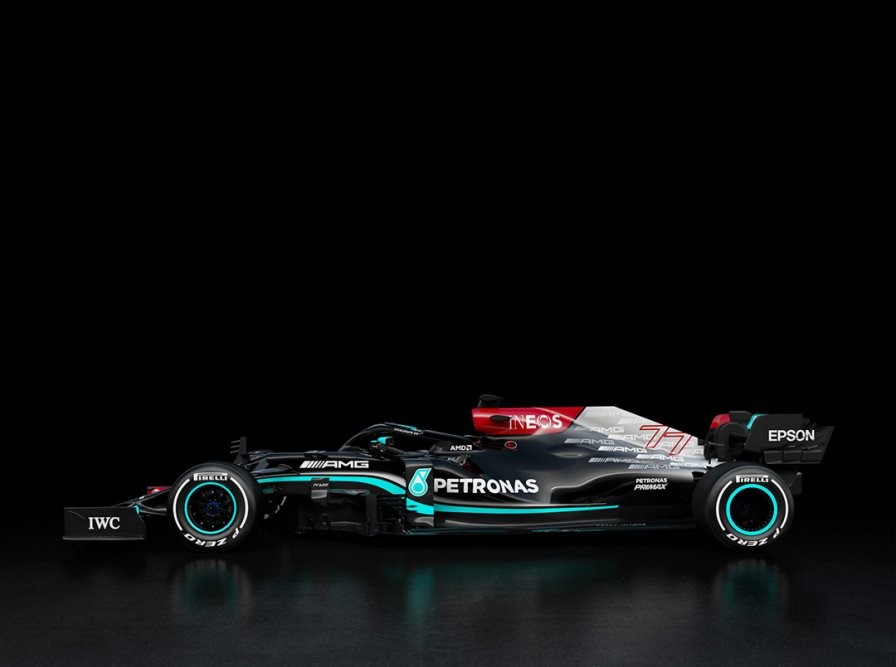
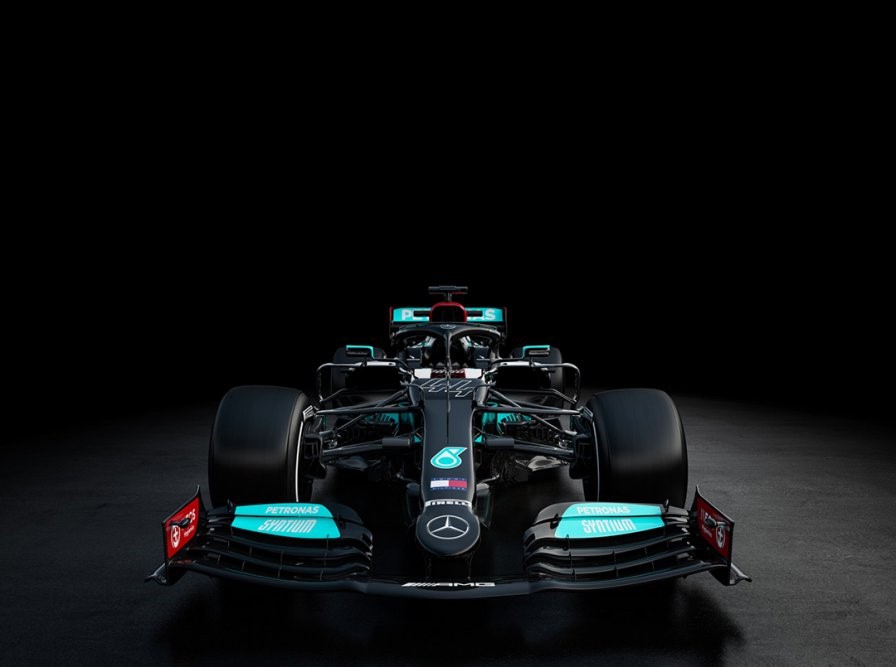
“The team’s 2021 challenger is named Mercedes-AMG F1 W12 E Performance and is our first car to use the ‘E PERFORMANCE’ designation, signifying our closer alignment to the Mercedes-AMG performance division in the future. ‘E PERFORMANCE’ is the new technology label that will be used in product names and badges on all forthcoming Mercedes-AMG performance hybrid cars – which feature direct cascade technology from F1 and, in particular, the work of Mercedes-AMG High Performance Powertrains in Brixworth”.
The team’s closer cooperation with AMG is also reflected in the new 2021 livery, with AMG branding replacing the star pattern on the engine cover which now fades to Mercedes’ traditional racing silver from the black base livery introduced in 2020. The most prominent colour remains the iconic green of Title Partner PETRONAS on the front and rear wings, nose, mirrors and halo, with the parallel green and silver stripes on the flanks of the car symbolising more than a decade of partnership between Mercedes and PETRONAS. The visual identity is completed by the burgundy of team shareholder and Principal Partner INEOS, which features on the airbox and the inside of the front wing endplates. The result is a striking and distinctive look for the season ahead.
This season also marks the beginning of an exciting new chapter for the team following the announcement late last year that Toto, Daimler and INEOS will be one-third, equal shareholders.
“The fact that we were able to attract INEOS as an investor shows that we have a strong business case and that F1 continues to be a highly attractive platform for big brands and companies,” said Toto. “We’re also seeing a slight shift in the way that F1 teams operate as the cost cap and the new structure move us towards a business model that is more familiar in American sports franchises. At the same time, having three strong shareholders in the team gives us even more stability for the future. On a personal level, I’m very happy to commit to the team for the long term and increase my share slightly. I’ve always said that this team is like a family to me and I’m incredibly proud of what we have achieved together.”
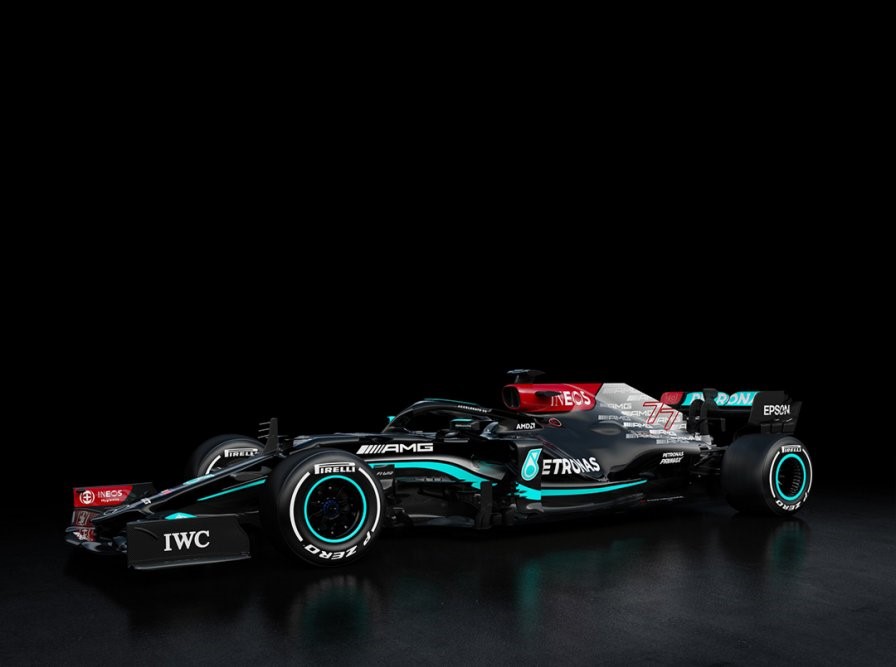
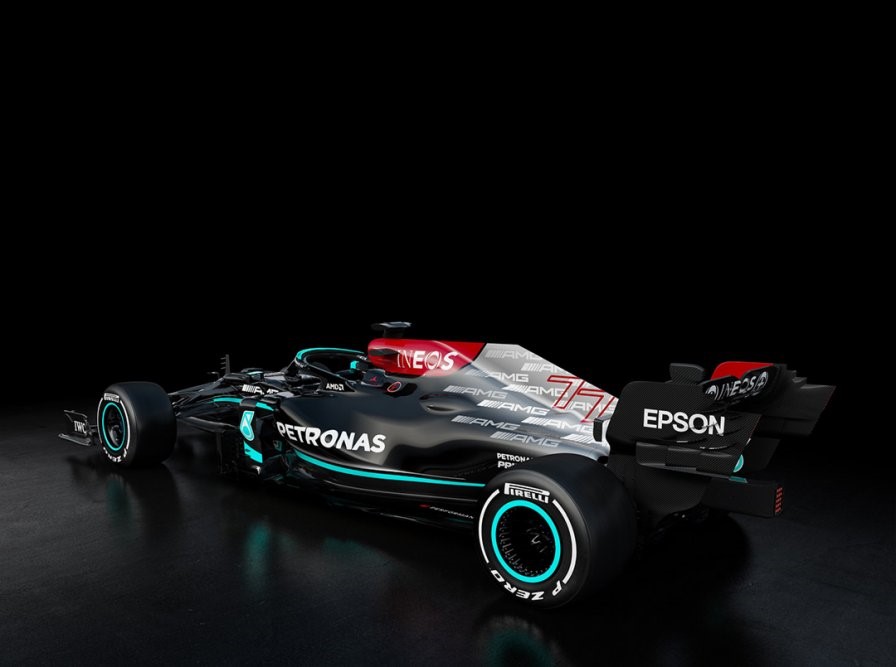
“We enjoy stability in the team’s driver line-up for the 2021 season, with Lewis and Valtteri entering their fifth season as team-mates. Both are looking forward to getting back in the cockpit after the winter break, which included intense winter training programmes.”
“The launch day of a new car is always a really exciting one,” said Lewis. “It’s great to reveal to the world the result of everyone’s hard work at the factories and to see some of my team-mates in person, which has been so rare during the past year. I’ve been in touch with the engineers through the winter, keeping track of their preparations as I prepare myself for the season ahead. The excitement has been building and building, so now I just can’t wait to get out on track in the W12.”
“Obviously we haven’t been able to visit the factory much in the past year so, firstly, I’m really happy to be back here and to see the new car in person for the first time,” said Valtteri. “I’ve been getting regular updates on how things are progressing, so it’s nice to now be able to see the end result in the flesh and that just gets me more fired up for the new season. The cars are pretty similar to last year but there are some interesting aero changes that will have an impact on how the car handles and performs, so I’m looking forward to seeing how it feels on track in Bahrain.”
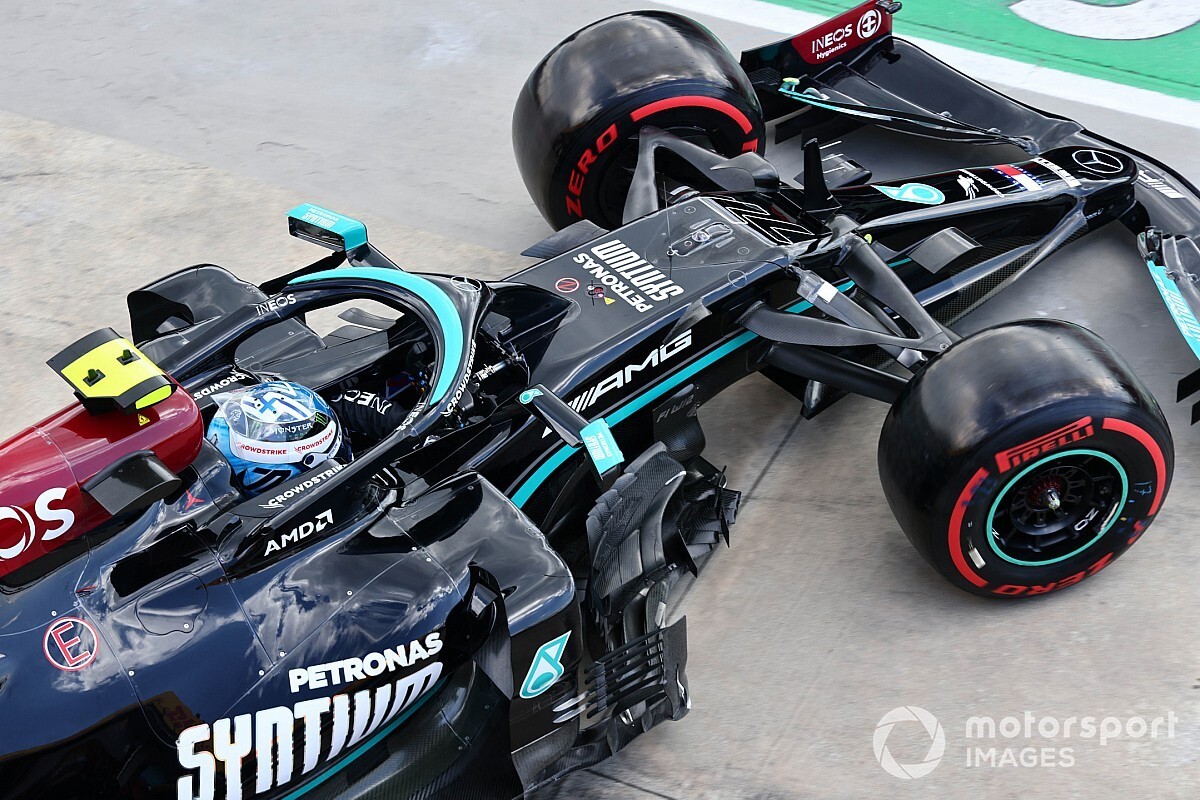
Valtteri Bottas, Mercedes W12-1.
FIRST LOOK: Mercedes retain black livery as they unveil Hamilton and Bottas’ new F1 car for 2021. 02 March 2021.
Mercedes have unveiled the car they hope will power them to a record-extending eighth consecutive World Championship double in 2021, after pulling the covers off the new W12.
The Silver Arrows have dominated in Formula 1 since the switch to turbo-hybrid engines in 2014, picking up every constructors’ and drivers’ championship since that year, when they ended Red Bull’s four-year winning streak.
And the Brackley-based team are aiming to extend that remarkable run with the car they revealed on Tuesday morning, which is officially called the Mercedes-AMG F1 W12 E Performance.
The new car carries over much of its technology from last season’s W11 – which won 13 of 17 races – after F1’s big regulation change was delayed until 2022 after the Covid-19 pandemic struck. Nonetheless there are some key changes on the car, notably the trimmed floor, as required by the tweaked rules for the coming season.
The team ran last year’s car in a special black livery, which they switched to before the delayed season started, as a show of support for diversity and a stand against racism and discrimination everywhere – a cause that Lewis Hamilton particularly embraced throughout the season.
And they have retained the black colour scheme for 2021, with a fade to silver towards the rear and a dash of red in deference to sponsor and now team shareholder Ineos.
Hamilton will once again be at the wheel for Mercedes after signing a new-one-year contract in January, making it his eighth year with the squad since his switch from McLaren in 2013. The Brit picked up his seventh drivers’ title last year to equal Michael Schumacher’s tally and will be hoping the W12 can help him take the record outright in 2021.
He will again be joined by Valtteri Bottas, who goes into his fifth year with the team aiming to finally topple his super-quick team mate and claim the title for himself.
Ex-McLaren racer Stoffel Vandoorne will continue in his reserve driver role, alongside his Mercedes team-mate in Formula E, Nyck de Vries.
The new car will hit the track for pre-season testing on March 12-14th, ahead of the season opening Bahrain Grand Prix two weeks later.
Mercedes-AMG F1 W12 E Performance – Technical Specifications
Chassis
Monocoque: moulded carbon fibre and honeycomb composite structure.
Bodywork: carbon fibre composite including engine cover, sidepods, floor, nose, front wing and rear wing.
Cockpit: removable driver’s seat made of anatomically formed carbon composite, OMP six-point driver safety harness, HANS system.
Safety structures: cockpit survival cell incorporating impact-resistant construction and penetration panels, front impact structure, prescribed side impact structures, integrated rear impact structure, front and rear roll structures, titanium driver protection structure (halo).
Front suspension: carbon fibre wishbone and pushrod-activated torsion springs and rockers.
Rear suspension: carbon fibre wishbone and pullrod-activated inboard springs & dampers.
Wheels: OZ forged magnesium.
Tyres: Pirelli.
Brake system: Carbone Industries Carbon / Carbon discs and pads with rear brake-by-wire.
Brake calipers: Brembo.
Steering: power-assisted rack and pinion.
Steering wheel: carbon fibre construction.
Electronics: FIA standard ECU and FIA homologated electronic and electrical system.
Instrumentation: McLaren Electronic Systems (MES).
Fuel system: ATL Kevlar-reinforced rubber bladder.
Lubricants & fluids: PETRONAS Tutela.
Transmission
Gearbox: eight speed forward, one reverse unit with carbon fibre maincase.
Gear selection: sequential, semi-automatic, hydraulic activation.
Clutch: carbon plate.
Dimensions
Overall length: over 5000mm.
Overall width: 2000mm.
Overall height: 950mm.
Overall weight: 752kg.
2021 Mercedes F1 Engine
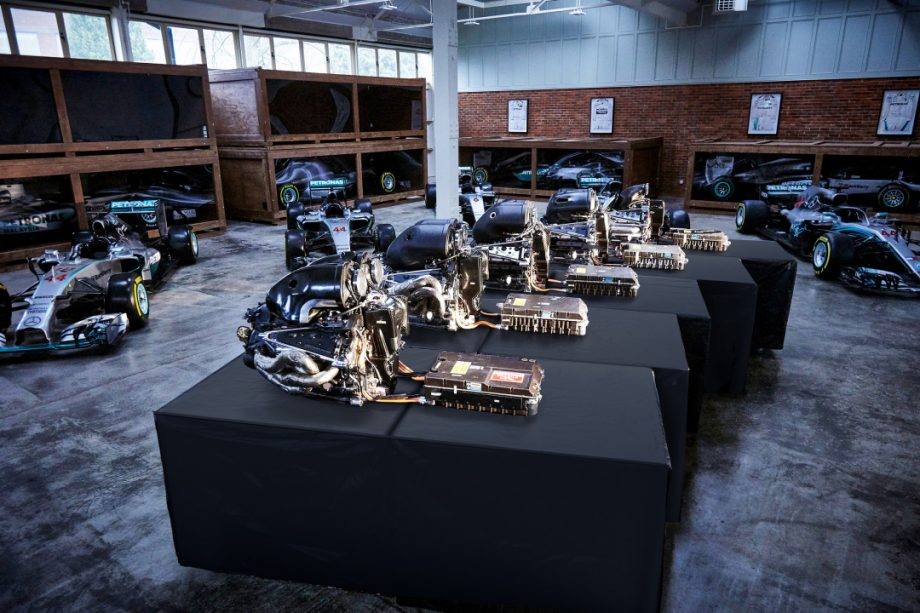
© Daimler AG.
Mercedes-AMG F1 M12 E Performance – Technical Specification
Power Unit Specification
Type: Mercedes-AMG F1 M12 E Performance.
Minimum weight: 145 kg.
Power Unit perimeter:
-
Internal Combustion Engine (ICE)
-
Motor Generator Unit – Kinetic (MGU-K)
-
Motor Generator Unit – Heat (MGU-H)
-
Turbocharger (TC)
-
Energy Store (ES)
-
Control Electronics (CE)
Power Unit allocation:
-
Three ICE, TC & MGU-H per driver per season
-
Two MGU-K, ES, CE per driver per season
Internal Combustion Engine (ICE)
Capacity: 1.6 litres.
Cylinders: Six.
Bank angle: 90.
Number of valves: 24.
Max rpm ICE: 15,000 rpm.
Max fuel flow rate: 100 kg/hour (above 10,500 rpm).
Fuel injection: high-pressure direct injection (max 500 bar, one injector/cylinder).
Pressure charging: single-stage compressor and exhaust turbine on a common shaft.
Max rpm exhaust turbine: 125,000 rpm.
Energy Recovery System (ERS)
Architecture: integrated hybrid energy recovery via electrical motor generator units.
Energy store: lithium-ion battery solution of minimum 20 kg regulation weight.
Max energy storage/lap: 4 MJ.
Max rpm MGU-K: 50,000 rpm.
Max power MGU-K: 120 kW (161 hp).
Max energy recovery/lap MGU-K: 2 MJ.
Max energy deployment/lap MGU-K: 4 MJ (33.3 s at full power).
Max rpm MGU-H: 125,000 rpm.
Max power MGU-H: unlimited.
Max energy recovery/lap MGU-H: unlimited.
Max energy deployment/lap MGU-H: unlimited.
Fuel & Lubricants
Fuel: PETRONAS Primax.
Lubricants: PETRONAS Syntium.
Mercedes has F1 engine innovations it will race for first time. March 2 2021. By Scott Mitchell.
Mercedes has “completely new innovations” on its 2021 Formula 1 power unit that it will be racing for the first time this season.
The championship-winning team reasserted itself as the leading engine-maker in F1 last season after being controversially deposed by Ferrari in 2019, when the Maranello team was suspected of manipulating rules governing fuel-flow limits and burning oil for performance gains.
Speaking at Mercedes’ virtual launch event, technical director James Allison drew attention to the revised sidepod of the W12, explaining that “you’ll see a rather sexy looking bulge in the engine cover which is hiding some of the work which our friends at HPP have done to squeeze more horses into that power unit for us for the year.”
Mercedes threw significant resources into its 2020 engine, surprising chief rival Red Bull and its engine partner Honda with the results and has sought another development step for 2021.
Mercedes High Performance Powertrains boss Hywel Thomas outlined “three main areas” the company had identified to work on for the 2021 engine, having recently revealed that the design had encountered some issues on the dyno that would be fixed for the start of the season.
“We’ve continued the development of the technology in the power unit,” he said.
“That’s a continuous process and we feel like we’ve been able to take a step forward on that front again this year.”
“The second area is reliability. We discovered some design issues last year, so we’ve been looking at those and introduced some changes to address them.
“And we’ve also got some completely new innovations that will be in the racing PU for the first time.
“That was particularly challenging because last season finished late, so the winter period has been shorter than normal and has given us less time to prepare, which put extra strain on the business.”
Thomas explained that Mercedes has sought even better thermal efficiency in the internal combustion engine and introduced “changes to the turbocharger to minimise the impact on the heat rejection”.
“Those are probably the most striking when it comes to crank power and the performance of the power unit,” he said.
“We’ve also completed some work on improving the reliability of the PU. In 2020, we used an aluminium structure which wasn’t as reliable as intended, so we’ve introduced a new alloy for the engine block.
“We’ve also made some adjustments to the energy recovery system, to make it more resilient.
“We’ve got a big challenge in 2021 with 23 races on the calendar, we will need to ensure that the reliability of the power unit is spot on.
“We’ve worked hard on that area and hopefully it’s paid off.”
One of the specific reliability gains that Mercedes has outlined has been revising its new-for-2020 MGU-K design.
Thomas described last year’s MGU-K as a “complete redesign”, which made a “solid step forwards in performance” but was also “difficult to manufacture and assemble consistently”.
That led to some cases of mid-life failures, which HPP has sought to understand and address.
“We have changed it for this year, to allow for a more consistent manufacturing route which should help to improve the reliability of the MGU-K,” he said.
Manufacturers may only upgrade their 2020 engine specification once between the end of last season and the end of 2021, unless it is for reliability reasons.
That means once the engine is introduced, which is likely to be the season opener for all four manufacturers, its performance level will be frozen for the season.
However, preparation has been restricted compared to previous years as engine dyno time was cut back during 2020 and for 2021 as well.
“It’s similar to how wind tunnel usage has seen restrictions for a number of years, but we had to implement the restrictions with immediate effect for the dyno,” said Thomas.
“Now, we need to decide earlier what projects to focus on, because we can’t afford to use precious dyno hours on ideas that end up not making it to the car.”
Mercedes has added McLaren to its list of customers in 2021, joining the renamed Aston Martin team and Williams.
Thomas admitted that had and would continue to “put more pressure” on HPP.
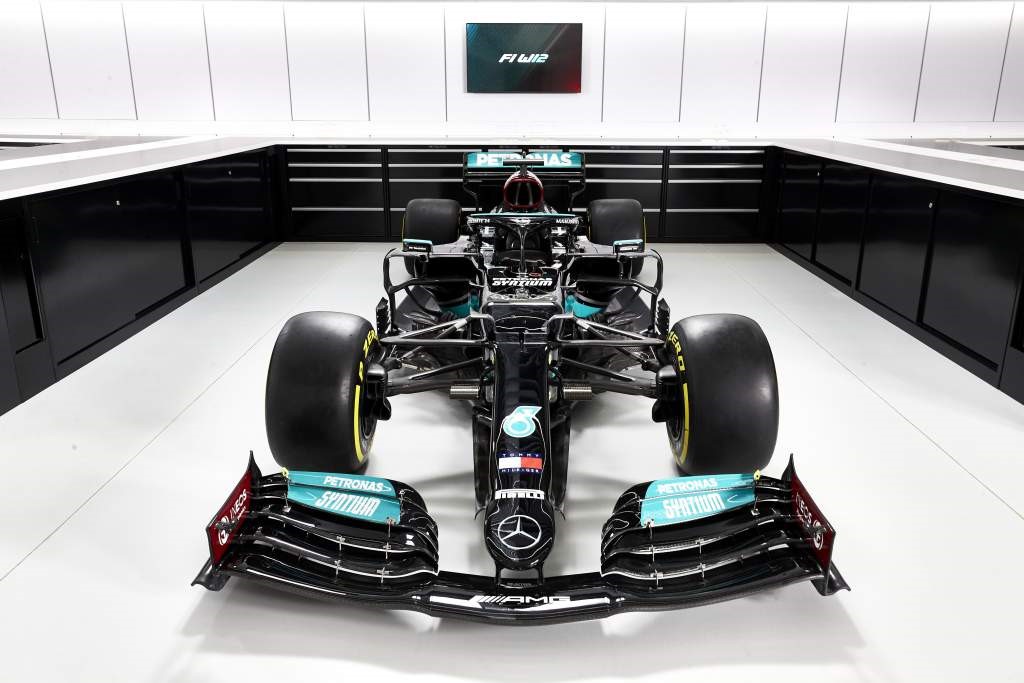
“We need to take more engines to winter testing, we need to take more engines to the first race, but we don’t want to freeze our designs any earlier because of that,” he said.
“So that puts some additional strain on the internal and external supply chains and the build and test team, to be able to develop the design for as long as possible.
“What we gain is another group of chassis designers looking at the PU, looking at how it works, how it’s integrated into the car, how it’s working with the rest of the package.
“We can add all those comments and ideas into the melting pot of this season and all the subsequent seasons.”
Ferrari's answer to Mercedes for 2021 is the SF21.
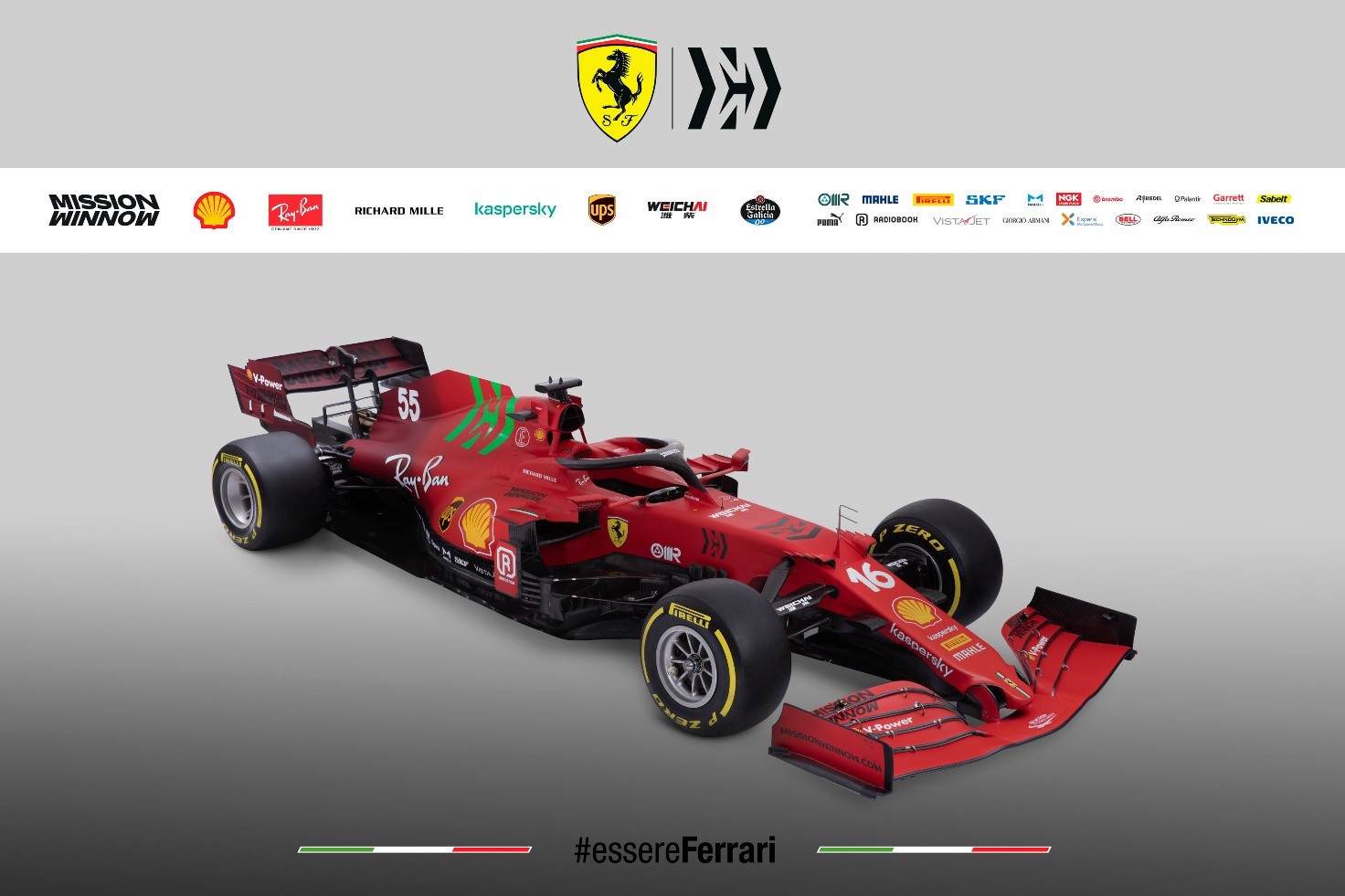
Here's the SF21. A livery blending two shades of red for the 2021 car, aimed at the future while not forgetting our history.
Maranello, 10 March 2021 – Scuderia Ferrari Mission Winnow’s SF21 car that will race this season was seen for the first time today and features a subtle livery that looks to the challenges of the future without forgetting the team’s roots and history. “The rear end is reminiscent of the burgundy red of the very first Ferrari, the 125 S,” explained Team Principal Mattia Binotto. “But as it moves gradually towards the cockpit area, it transforms into the modern red that we have used in most recent years. This season presents us with many challenges and through this livery, visually, we reboot from our past and head into the future.”
This car is the 67th to be built in Maranello to compete in the Formula 1 World Championship and is an evolution of last year’s SF1000, as dictated by the regulations, which require the use of the same chassis as in 2020, thus limiting the opportunities for change in many areas. Therefore, the SF21 was developed in all the permitted areas, from the engine, which is completely new, to the aerodynamics and, at the rear end, which is where the two development tokens allowed in the regulations have been used.
The SF21 makes its track debut tomorrow in Bahrain for a Filming Day, during which it can complete up to 100 kilometres for the purpose of acquiring film footage for team partners and media use. The Scuderia’s youngest driver line-up since 1968, Charles Leclerc and Carlos Sainz, will both drive. When the first race of the season takes place on 28 March, the pairing’s average age will be 25 years and 3 days. Before that, they will tackle the only 2021 pre-season test, getting to grips with the new car over three days at the Sakhir circuit.
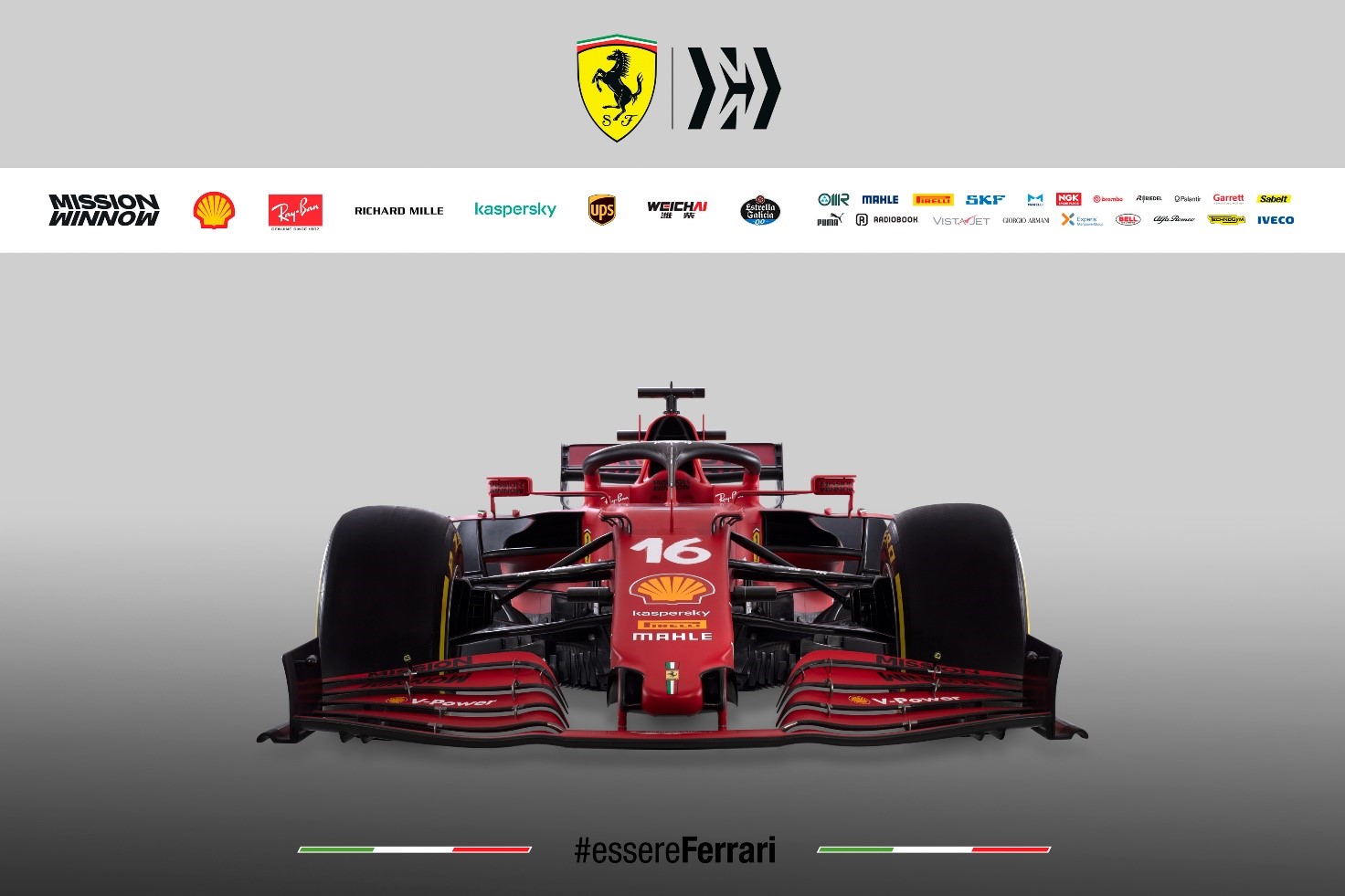
Laurent Mekies Racing Director
“There’s plenty of positive energy coming from our two drivers. Carlos has spent a lot of time in the factory and has integrated with the team very quickly. As for Charles, he is already perfectly at home with the team: he knows what he wants and is also very aware of the role he has in the team, both in and out of the car. Over the winter, we have witnessed the two guys getting on very well together and this can only be a good thing for the whole team”.
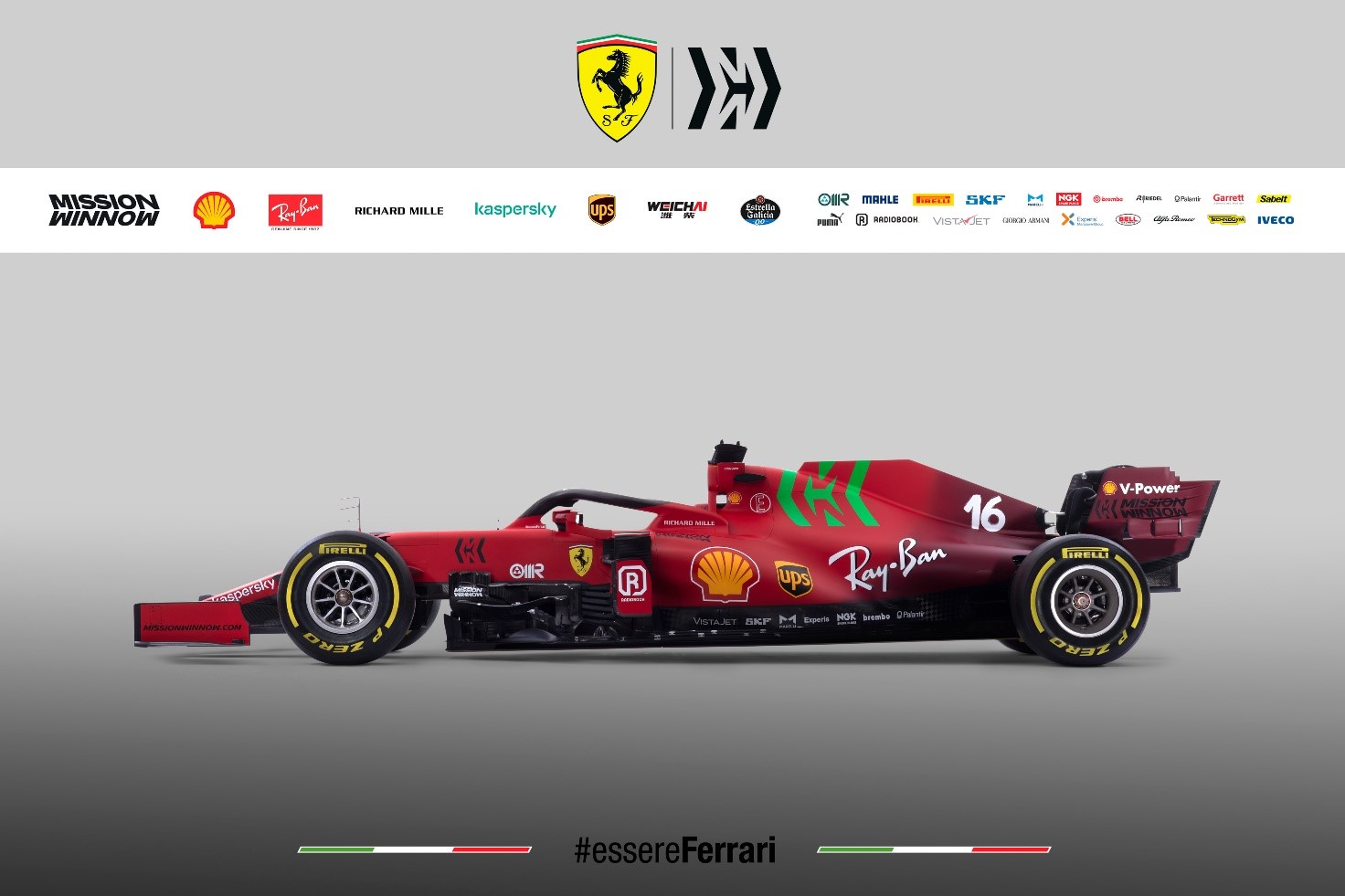
Enrico Gualtieri Head of Power Unit
“As engine engineers, last season on track produced a clear picture of where we were and that was our starting point. It was that awareness, combined with our determination, our skills and those of our partners, that led to the creation of the 065/6 power unit for the 2021 season. We adopted a systematic approach, with all departments - design, simulation, development, track - working together to find every opportunity for improvement. Along with our colleagues on the chassis side, we worked a lot on the layout of the power unit, to make the overall design of the car as efficient as possible. With the internal combustion engine, we focused on increasing its level of thermal efficiency, in conjunction with our partner Shell and this has produced an improvement in lap time that we estimate at over one tenth of a second. We are also carrying out further development on the hybrid system and the electronics, in order to revise and optimise all components. All this in a season in which power unit test bench time has been reduced still further”.
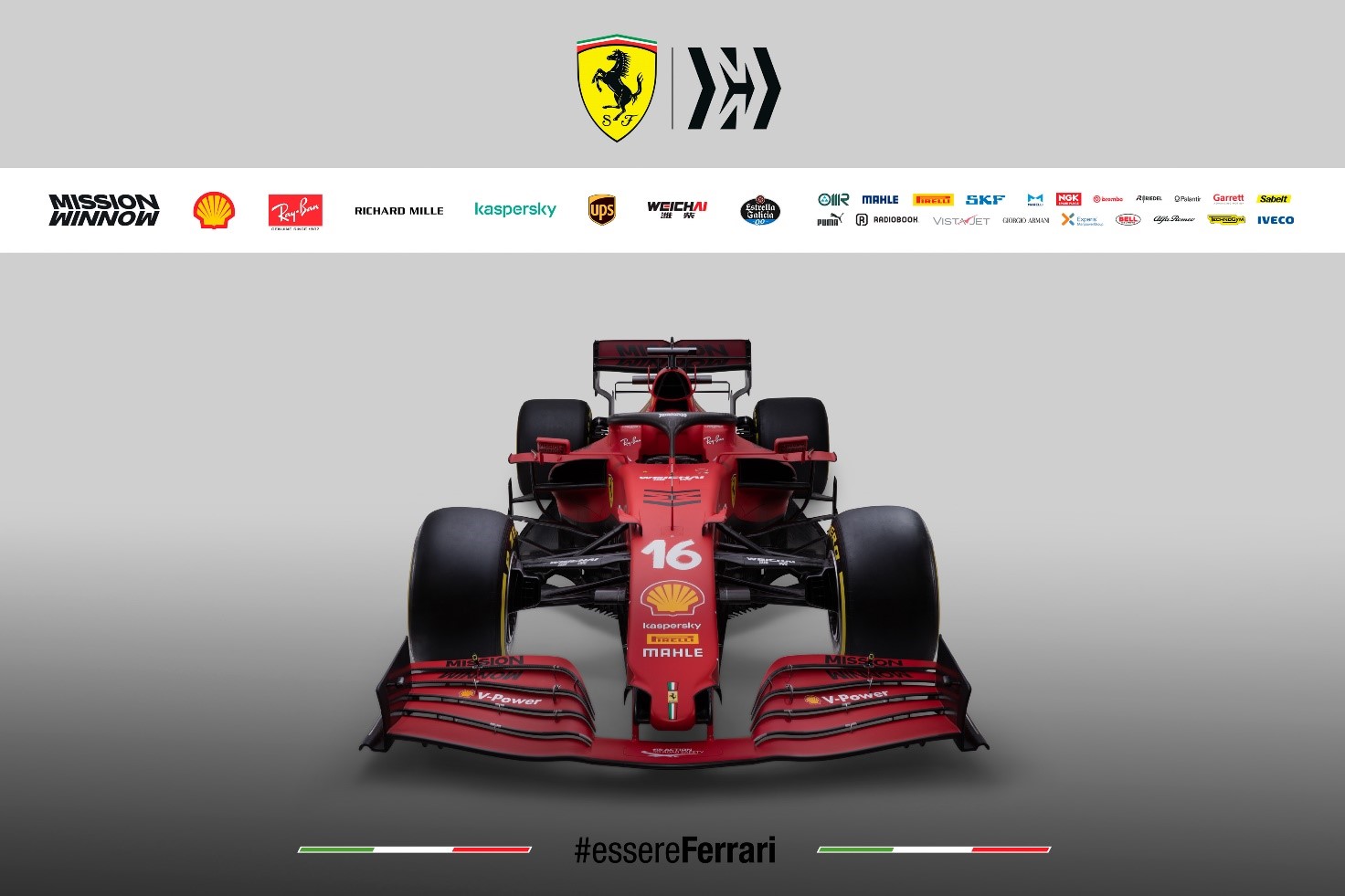
Enrico Cardile Head of Chassis
“When we began the SF21 project, our first task was to identify which area of the car we should focus on in order to achieve a radical change. We opted for the rear end, designing a new gearbox and new suspension system. This, in addition to the efforts of our power unit colleagues, has led to a much tighter rear end. We also looked at the cooling system, increasing the effectiveness of the central radiator and designed the body with more “downwashing.” Aerodynamics was one of the areas affected by the regulation changes, aimed at reducing the ability to generate vertical load in order not to put too great a strain on the tyres. That’s why, as we began developing the car’s aerodynamics, we set ourselves two goals: recovering more aerodynamic downforce than was lost through the regulations and reducing drag. Because of the regulations, less drastic changes were possible at the front end of the car. So, we developed a new front wing which works in conjunction with a new concept nose, but the chassis itself and the suspension is off last year’s SF1000”.
Technical specifications Ferrari SF21
Power unit 065/6
Capacity 1600 cc
Max RPM 15,000
Supercharging Single turbo
Fuel flow 100 kg/hr max
Configuration V6 90°
Bore 80 mm
Stroke 53 mm
Valves 4 per cylinder
Injection 500 bar – direct
ERS System
Configuration Hybrid energy recovery system via electrical Motor Generator Units
Battery pack Lithium-Ion batteries of minimum 20 kg weight
Battery pack max energy storage 4 MJ
MGU-K max power 120 kW (161 hp)
Max MGU-K RPM 50,000
Max MGU-H RPM 125,000
Car
Overall weight including water, oil and driver: 752 kg.
Chassis made from carbon fibre and honeycomb composite with halo protection device around the cockpit.
Bodywork and seat made from carbon fibre.
Rear differential with hydraulic torque converter.
Brembo carbon disc brakes, front and rear. Electronic brake-by-wire on rear brakes.
Ferrari longitudinally-mounted gearbox with 8 forward gears and reverse.
Push-rod front suspension, pull-rod rear suspension 13” front and rear wheels.
Mercedes F1 history - the early years.
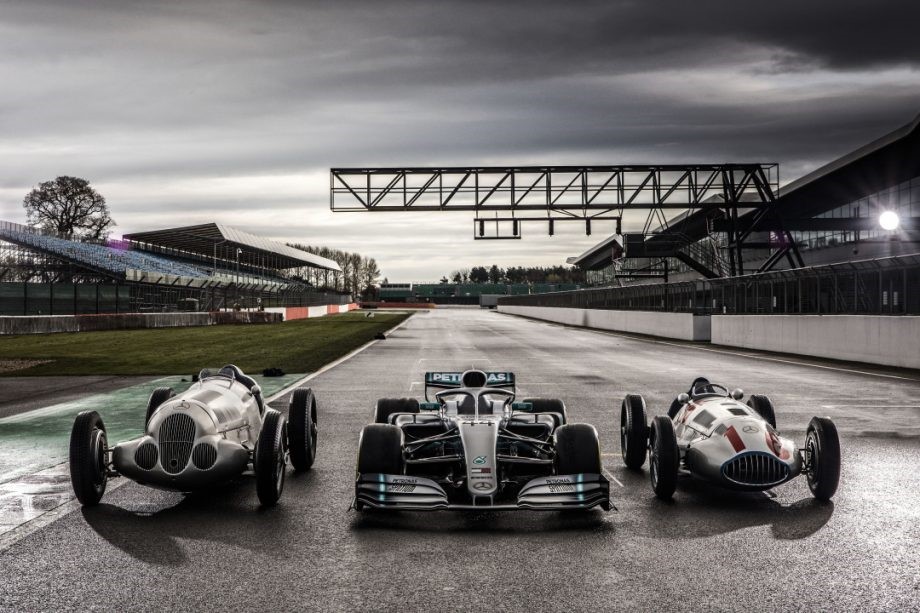
Mercedes-Benz W125, Mercedes-AMG F1 W10 and Mercedes-Benz W165. © Daimler AG
Mercedes has been involved in motor racing even before the term “motor racing” was coined.
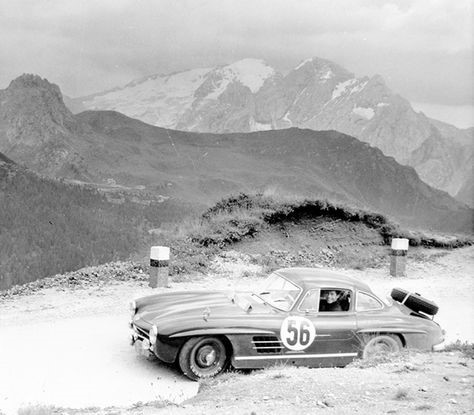
The Mercedes-Benz marque we know today was created following a merger of a German industrial machine production company Benz & Companie Rheinische Gasmotoren-Fabrik (Benz & Cie) and a German engineering company Daimler-Motoren-Gesellschaft (DMG) in 1926.
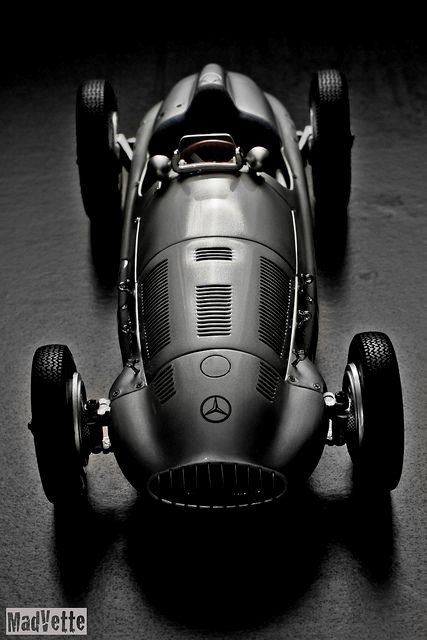
Mercedes W165. By Jassem Hassan.
The new company was named Daimler-Benz (today known as Daimler AG). Its motorsport roots can be traced all the way back to the first ever motor race, the 1894 Paris-Rouen, where a single Benz vehicle driven by Émile Roger finished 14th. On the other side of the future partnership, DMG built its first race car in 1902 – the Mercedes Simplex. The vehicle dominated racing before the First World War.
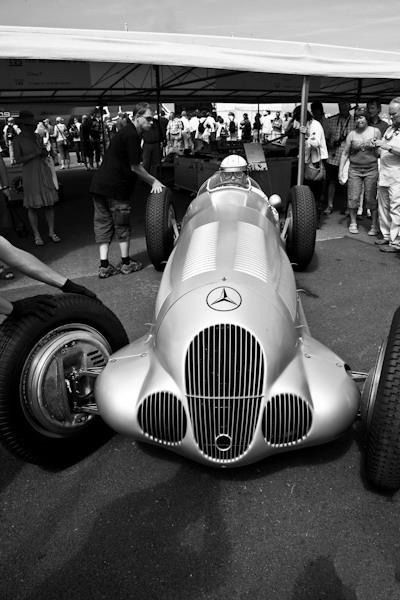
Benz’s involvement in motor racing continued throughout the 1910s with the Blitzen-Benz (introduced in 1909) and in the 1920s with the Benz Tropfenwagen (introduced 1921). By the end of the 1920s Benz & Cie ran into financial difficulties which led to the merger with DMG and the formation of Daimler-Benz.
The 1930s – Rise of the Silver Arrows
The 1930 saw Daimler-Benz and its Mercedes-Benz Silver Arrows dominate Grand Prix racing in Europe.
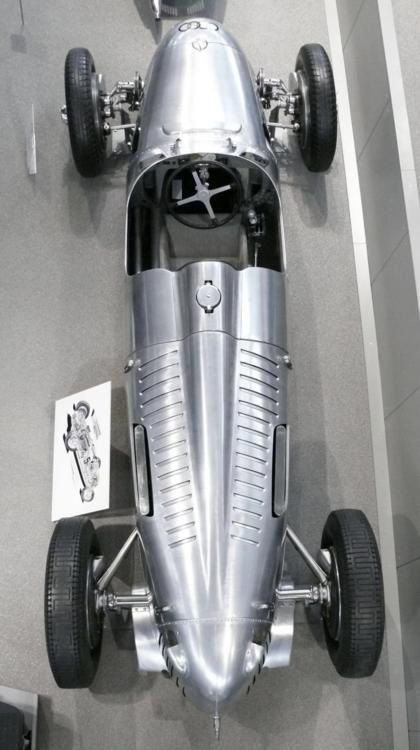
Auto Union Type C Grand Prix silver 1936.
Led by the legendary team manager Alfred Neubauer, Mercedes-Benz and its main rival Auto Union won all European Grand Prix Championships from 1934 until they withdrew form racing in 1939, ahead of the Second World War.
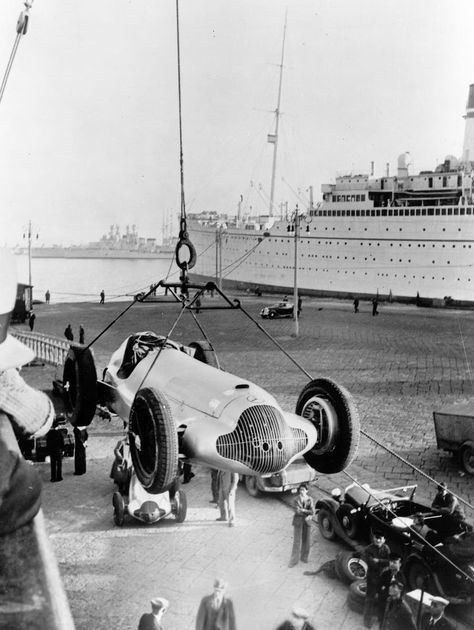
75th anniversary of the Mercedes Benz W125 Silver Arrow - 595 bhp and 750 kg in 1937.
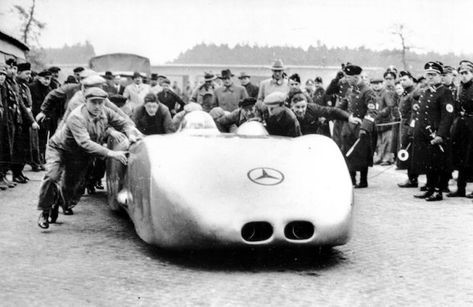
The famed Mercedes-Benz W125 Streamliner that Rudolf Caracciola drove in 1938 to nearly 270 mph on the German Autobahn.
In the process they produced many legendary cars such as the Mercedes-Benz W25 (1934 to 1936), W125 (1937), W154 (1938 and 1939) and W165 (1939), which were driven by motorsport greats Rudolf Caracciola, Manfred von Brauchitsch, Richard Seaman and many others.
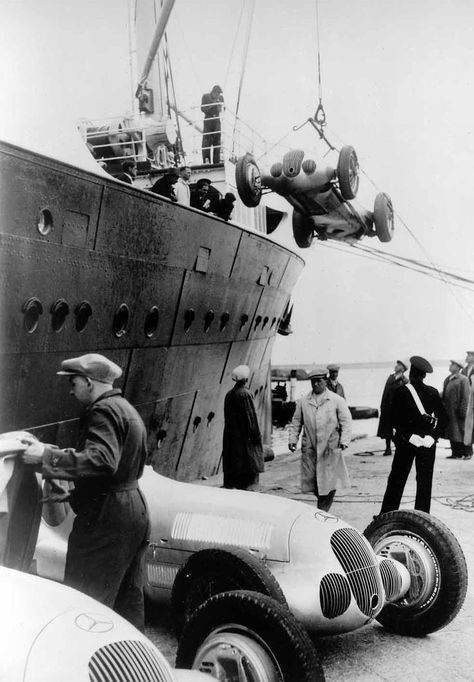
Why the “Silver Arrows”?
Mercedes’ racing cars are nowadays instantly recognizable by their traditional silver color, so the question seems a bit redundant. However the story of how they got the famous colour is the stuff of motorsport legend.
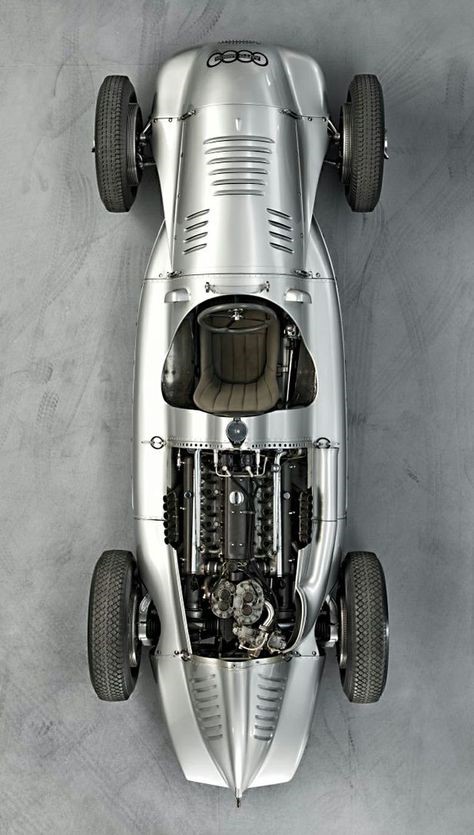
1938 Auto Union Type 'D' Car.
Firstly its important to establish that the “Silver Arrows” name was given to German racing teams, both Mercedes and Auto Union. Back in the old days each country was assigned a colour that made them instantly recognizable, for example Italian cars were painted red, British cars were painted dark green, French cars were painted blue, while German cars were painted white (interchangeable with silver as both colours share the same heraldry tincture). However, according to Alfred Neubauer’s account of the origin of the Silver Arrows given in 1958, Mercedes started using the colour silver by accident. The story goes that Mercedes’ new car, the W25, was originally painted white but, after it was deemed around 1kg too heavy ahead of the Eifelrennen at the Nürburgring in 1934, a desperate Neubauer (and in some accounts driver Manfred von Brauchitsch) decided to scrape off the lead-based paint which helped the car meet the 750kg maximum weight limit. Without paint the silver aluminum surface of the car was exposed and, after von Brauchitsch won the race, the media nicknamed Mercedes’ cars – the Silver Arrows.
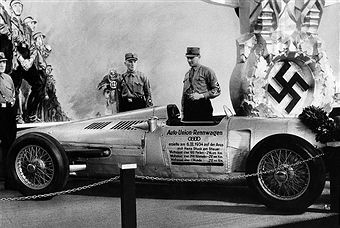
German Empire - Unknown exhibition, Auto Union racing car, which Hans Stuck was driving at the Avus at record speed on 6th of March 1934, SA men and swastika in the background.
This account has been contested numerous times by motorsport historians (among others) who pointed that Mercedes and Auto Union raced silver cars as early as 1932.
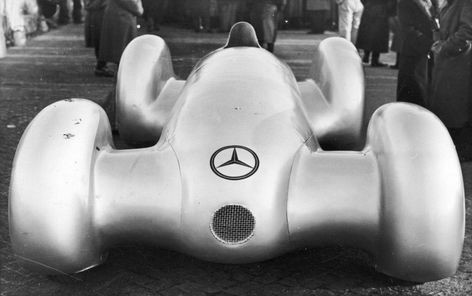
Mercedes-Benz W154 3lt Class D International records 1939.
Still the story remains one of motorsport’s most enduring legends.
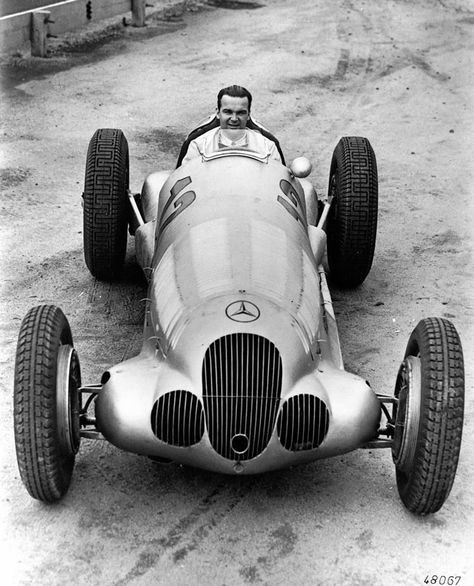
Mercedes-Benz in Formula One
Daimler AG, through its Mercedes-Benz brand, has been involved in Formula One as both team owner and engine manufacturer for various periods since 1954. They currently own 33 percent of the team based in Brackley, England, which is currently named Mercedes-AMG Petronas F1 Team and uses a German licence.
Before the Second World War Mercedes-Benz competed in the European Championship, winning three titles.
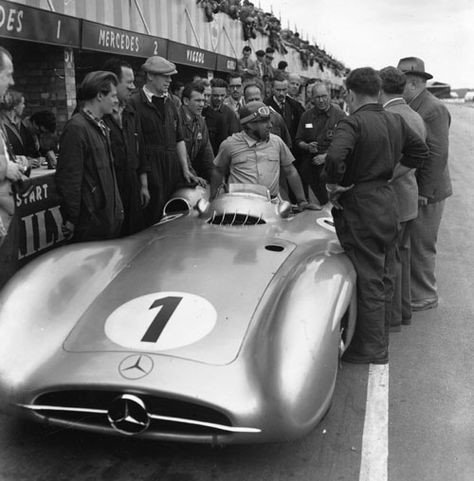
Jose Froilan Gonzalez leads the field away at the start of the 1954 British Grand Prix.
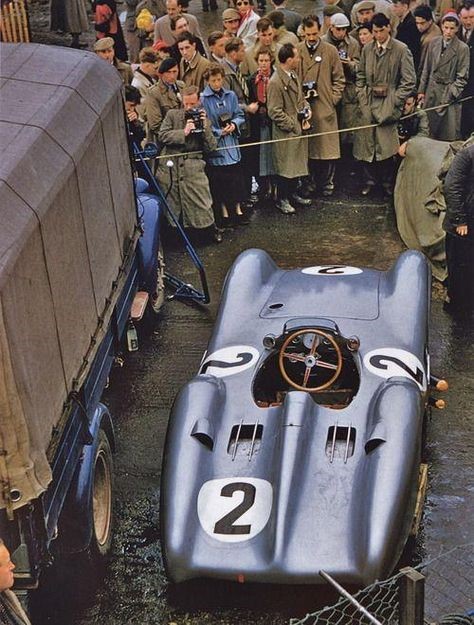
1954 British GP - Karl Kling - Mercedes Benz.
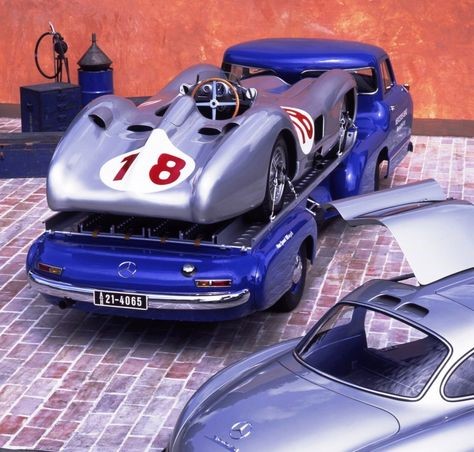
1954 Mercedes-Benz 'Blue Wonder' race transporter.
The marque debuted in Formula One in 1954. After winning their first race at the 1954 French Grand Prix, driver Juan Manuel Fangio won another three Grands Prix to win the 1954 Drivers' Championship and repeated this success in 1955.
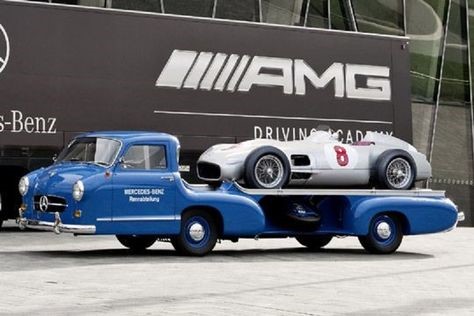
1955 Mercedes race car transporter.
Despite winning two Drivers' Championships, Mercedes-Benz withdrew from motor racing after 1955 in response to the 1955 Le Mans disaster.
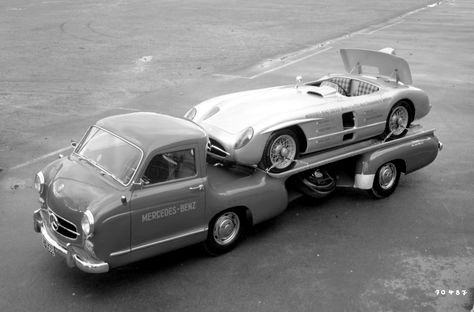
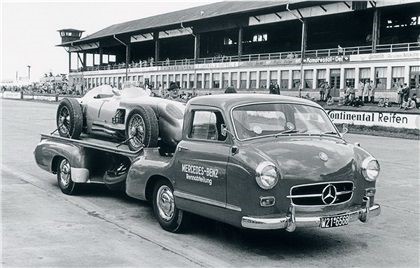
Mercedes Benz F1 car transporter.
Mercedes returned to Formula One in 1994 as an engine manufacturer in association with Ilmor, a British independent high-performance autosport engineering company, which developed their engines. The company won one constructors' title and three drivers' titles in a works partnership with McLaren, which lasted until 2009. In 2005, Ilmor was rebranded as Mercedes AMG High Performance Powertrains.
In 2010 the company bought the Brawn GP team, rebranding it as Mercedes. After a major rule shake-up in 2014, Mercedes has become one of the most successful teams in Formula One history; having achieved consecutive Drivers' and Constructors' Championships from 2014 to 2020. It has set the new record for most wins in a season (19 in 2016) and for most consecutive constructors' titles.
The manufacturer has collected more than 200 wins as an engine supplier and is ranked second in Formula One history. Nine Constructors' and 13 Drivers' Championships have been won with Mercedes-Benz engines.
Constructor
Grand Prix racing before Formula One (1930s)
Mercedes-Benz formerly competed in Grand Prix motor racing in the 1930s, when the Silver Arrows dominated the races alongside rivals Auto Union. Both teams were heavily funded by the Nazi regime, winning all European Grand Prix Championships after 1934, of which Rudolf Caracciola won three for Mercedes-Benz.
Daimler-Benz AG (1954–1955)
In 1954, Mercedes-Benz returned to what was now known as Formula One (a World Championship having been established in 1950) under the leadership of Alfred Neubauer, using the technologically advanced Mercedes-Benz W196. The car was run in both the conventional open-wheeled configuration and a streamlined form, which featured covered wheels and wider bodywork. Juan Manuel Fangio, the 1951 champion, transferred mid-season from Maserati to Mercedes-Benz for their debut at the French Grand Prix on 4 July 1954. The team had immediate success and recorded a 1–2 victory with Fangio and Karl Kling, as well as the fastest lap (Hans Herrmann). Fangio went on to win three more races in 1954, winning the championship.
The success continued into the 1955 season, with Mercedes-Benz developing the W196 throughout the year. Mercedes-Benz again dominated the season, with Fangio taking four races and his new teammate Stirling Moss winning the British Grand Prix. Fangio and Moss finished first and second in that year's championship. The 1955 disaster at the 24 Hours of Le Mans on 11 June, which killed Mercedes-Benz sportscar driver Pierre Levegh and more than 80 spectators, led to the cancellations of the French, German, Spanish and Swiss Grands Prix. At the end of the season the team withdrew from motor sport, including Formula One. During this first period of the team's participation in Formula One, Mercedes won 9 races in total, including three Grands Prix (the 1954 French Grand Prix, 1954 Italian Grand Prix and 1955 Italian Grand Prix) won by the streamlined "Type Monza", making them the only three races won by a closed-wheel car in Formula One history.
Mercedes-AMG Petronas Formula One Team (2010–present)
Before the start of the 2010 season, Mercedes-Benz's parent company Daimler AG bought a minority stake (45.1%) in the Brawn GP team with Aabar Investments, purchasing 30% on 16 November 2009. Following the purchase of the team, as well as a sponsorship deal with Petronas, the team was rebranded as Mercedes GP Petronas Formula One Team and Mercedes would now compete in the constructor's championship for the first time. Ross Brawn continued his duties as team principal and the team retained its base and workforce in Brackley, close to the Mercedes-Benz Formula One engine plant (formerly Ilmor Engineering) in Brixworth.
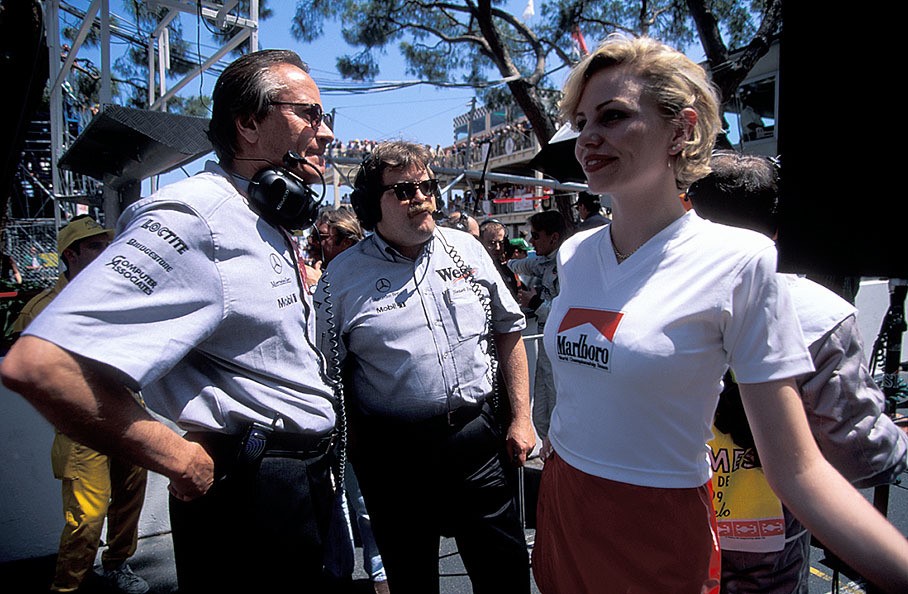
Mansour Ojjeh, Norbert Haug and a grid girl in Monte Carlo in 1999. Photo by Rainer Schlegelmilch.
The team has a complex history: its entry can be traced back to Tyrrell Racing, who competed as a constructor from 1970 until 1998 until being bought by British American Tobacco at the end of 1997, so its entry could be transferred to the then new constructor British American Racing (BAR) in 1999. BAR, who had formed a partnership with Honda, eventually became Honda Racing F1 Team in 2006 when British American Tobacco withdrew from the sport. It again changed hands in 2008 when Honda withdrew and was purchased by the team's management, naming it Brawn GP after team principal Ross Brawn. Brawn used engines from Mercedes-Benz High Performance Engines and, despite running on a low budget, Jenson Button won six of the first seven races and ultimately the 2009 Drivers' Championship, while Brawn won the Constructors' Championship. It was the first time in the sport's sixty-year history that a team won both titles in its maiden season.
Team Mercedes GP hired German drivers Nico Rosberg and seven-time world champion Michael Schumacher, who returned to Formula One after a three-year absence and Nick Heidfeld as the test and reserve driver. Of Brawn's 2009 drivers, Jenson Button signed for McLaren, whilst Rubens Barrichello moved to Rosberg's former seat with Williams team for 2010. With the acquisition of Brawn the team ended its involvement with McLaren, parent company Daimler AG sold back the 40% shareholding in the McLaren Group, while continuing to supply engines to the team. The team's performance during 2010 was not so competitive as under Brawn, with the team behind the leading three teams of Ferrari, McLaren and Red Bull. Their best results came from Rosberg finishing on the podium three times, scoring third places at Sepang, Shanghai and Silverstone. Rosberg eventually finished in seventh place but Schumacher had a disappointing return, being beaten by his teammate and finishing the season without a single race win, podium, pole position, or fastest lap for the first time since his début season in 1991. He also was involved in a controversy in Hungary, after nearly squeezing former Ferrari teammate Rubens Barrichello into the wall at 180 mph (290 km/h). Ultimately, the team finished fourth in the Constructors' Championship, with 214 points.
Prior to the start of the 2011 season, Daimler and Aabar purchased the remaining 24.9% stake owned by the team management in February 2011. Using the new MGP W02, the Australian Grand Prix ended when Schumacher and Rosberg both retired due to crash damage on laps 19 and 22 respectively. In Malaysia, Rosberg qualified ninth and Schumacher again failed to make Q3, qualifying eleventh. Schumacher scored the team's first points of the season with a ninth-place finish, whereas Rosberg had a quiet race and finished twelfth. In China, Rosberg and Schumacher showed strong form, with Rosberg finishing fifth as well as leading fourteen laps during the race, while Schumacher ended the race in eighth place. Rosberg added another fifth place in Turkey, while in Spain, Schumacher finished in sixth place, ahead of Rosberg. After scoring no points at the Monaco Grand Prix, Schumacher equalled his best finish for the team in Canada, finishing fourth after running as high as second. In Valencia, Rosberg finished seventh, and Schumacher seventeenth, after contact with Vitaly Petrov. Rosberg and Schumacher both finished in the points at the following two races in Great Britain and Germany. Gearbox issues stopped Schumacher from scoring at the Hungarian Grand Prix, but Rosberg managed to finish in ninth place. At the Belgian Grand Prix, Schumacher moved from the back of the grid – after losing a wheel in qualifying – to finish fifth, while Rosberg finished sixth, having led the race in its early stages. Again, the team finished fourth in the Constructors' Championship just as in 2010, with 165 points with no wins, podiums, or poles.
For 2012, the team removed the GP from their name and added the name of AMG, the high performance brand of Daimler AG, to their title. The team would officially get the designation Mercedes AMG Petronas F1 Team. At the start of the season Mercedes was the subject of protest over the use of a "radical" rear wing concept on the Mercedes F1 W03 racing car, which was not settled until the third race in China when the stewards unanimously rejected the protest. At the third race of the season in China, Rosberg took the team's first pole position as a works team since Fangio in 1955; Schumacher finished the session third, but moved up to second after a grid penalty for McLaren team's Lewis Hamilton.
The team secured its first win in 57 years when Nico Rosberg finished first in the 2012 Chinese Grand Prix. In addition to that, Rosberg became the first German driver to win a Grand Prix driving a German vehicle since Hermann Lang's victory at the 1939 Swiss Grand Prix. On 28 September 2012, it was announced that McLaren driver Lewis Hamilton would join the Mercedes team from the 2013 season onwards, having signed a three-year deal to partner Nico Rosberg in the team. In January 2013, Toto Wolff became an executive director of the Mercedes AMG Petronas Formula One Team, with his business partner Rene Berger becoming non-executive director. In addition to joining the team as managing partner, he also acquired 30% of Mercedes-Benz Grand Prix Ltd, with a further 10% held by Niki Lauda, chairman of the board and 60% by the parent company. Wolff took over the co-ordination of all Mercedes-Benz motorsport activities, a responsibility previously held by Norbert Haug.
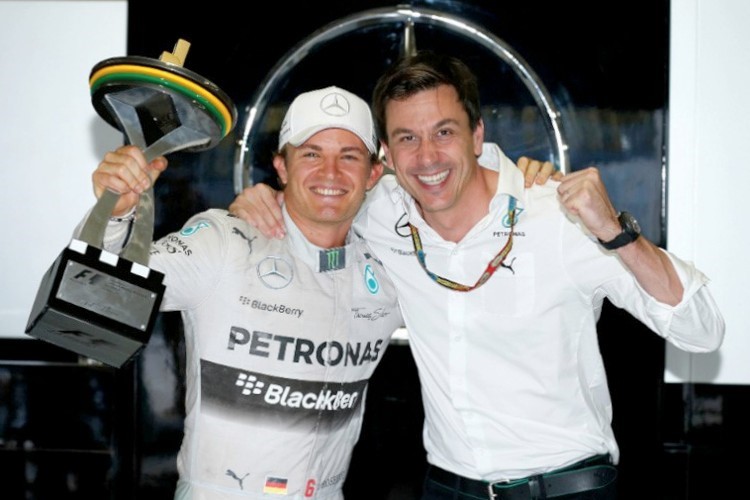
“I used to criticise Toto, now I’m like, ‘oh, shit”. Nico Rosberg is more empathetic to Toto Wolff after witnessing the management role himself.
The following season on 26 May 2013, Nico Rosberg capitalised on a pole position to award the team its first win of 2013 at the Monaco Grand Prix. Paddy Lowe moved to the team as Executive Director on 3 June 2013. Mercedes then went on to take third place in the Canadian Grand Prix courtesy of Hamilton, followed by another win for Rosberg at the British Grand Prix after the team took 1–2 in qualifying. The team then celebrated their third win of the season after Hamilton took his first victory for the team at the Hungarian Grand Prix, resulting in second place ahead of Ferrari in the Constructors' Championship.
V6 turbo era
Both drivers were retained for 2014. Rosberg won the first race of the season in Australia, then in Malaysia, Hamilton completed a grand slam – leading every lap from pole position, with the fastest race lap –while Rosberg completed a 1–2 finish for the team; it ended Hamilton's nine race streak without a podium finish and was the first 1–2 finish by Mercedes as a works team since the 1955 Italian Grand Prix. The team repeated the result at the Bahrain, the Chinese and the Spanish Grands Prix, while Rosberg and Hamilton finished 1–2 respectively at the Monaco and Austrian Grands Prix. At the German Grand Prix, Rosberg became the first German driver driving a German vehicle to win the German Grand Prix since it was achieved by Rudolf Caracciola and Mercedes-Benz at the 1939 German Grand Prix. At the Russian Grand Prix the team won their first Constructors' Championship as a works team.
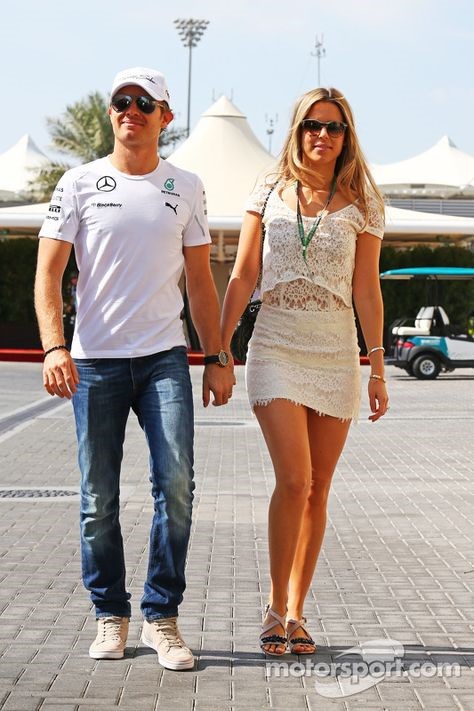
Nico Rosberg, Mercedes AMG F1, with his wife Vivian on November 21st, 2014 at Abu Dhabi. Photo by XPB Images.
Hamilton won the last race of the season, held in Abu Dhabi. He finished the season 67 points ahead of Rosberg, clinching the World Drivers' Championship. The team finished the 2014 season 296 points ahead of their closest rival Red Bull Racing in the World Constructors' Championship standings. With 18 pole positions, 16 wins and 11 1–2's out of 19 races, Mercedes dominated this first year of the V6 turbo era. For their 16 race victories, the average winning margin to the nearest non-Mercedes competitor was 23.2 seconds.
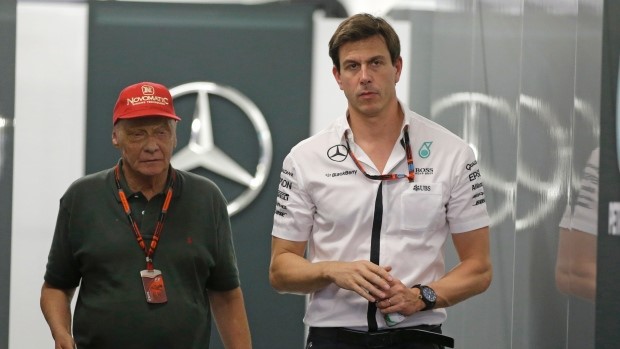
In this Saturday, Sept. 19, 2015 Head of Mercedes-Benz Motorsports Toto Wolff, right, walks with former F1 champion Niki Lauda, following the third practice session at the Singapore F1 Grand Prix on the Marina Bay City Circuit in Singapore. Struggling to deal with his raw emotions, Wolff said losing his close friend Niki Lauda has left him feeling "like a zombie" and cast a "huge black cloud" of sadness over motorsport. AP Photo/Mark Baker.
For the 2015 season, the team retained both Hamilton and Rosberg. At the 2015 Russian Grand Prix the team won their second Constructors' Championship as a works team and Hamilton won his second consecutive Drivers' Championship at the 2015 United States Grand Prix, finishing 59 points ahead of Rosberg. Mercedes continued their domination in this second year of the V6 turbo era, improving on their impressive numbers from 2014 with 18 pole positions, 16 wins and 12 1–2's in 19 races. Of their 16 race victories, the average winning margin to the nearest non-Mercedes competitor was 19.7 seconds, down from 23.2 seconds in 2014.
In the 2016 season, Mercedes won the Constructors' Championship for the third consecutive season, winning 19 of the 21 races held, while securing 20 poles (the highest percentage ever in a single season of F1 at 95.2%) and 8 1–2's. The average winning gap to the nearest non-Mercedes driver dropped to 14.6 seconds. Rosberg won his only Drivers' Championship, finishing 5 points ahead of Hamilton, before announcing his retirement shortly after winning the title.
On 10 January 2017, Mercedes announced that Executive Director Paddy Lowe had left the team and entered a period of garden leave. On 16 January 2017, Valtteri Bottas was announced as Rosberg's replacement for the 2017 season and British GP3 driver George Russell was incorporated into the junior team. On 22 October 2017, Mercedes won the Constructors' Championship for the fourth consecutive time. One week later, Lewis Hamilton became the first British driver to win four world championships. Mercedes finished the 2017 season with 12 wins out of 20 races, 15 poles, 4 1–2's and an average winning margin to the nearest non-Mercedes driver of 13.1 seconds.
For the 2018 season the team retained both Hamilton and Bottas. The team clinched their fifth straight constructors' title at the penultimate race of the season in Brazil after a win for Hamilton. In the 2018 season, Mercedes won 11 races (all for Hamilton) out of 21 races, took 10 fastest laps (three for Hamilton and seven for Bottas), 13 pole positions (eleven for Hamilton and two for Bottas) and four 1-2 finishes. This made Mercedes only the second team in the history in F1 to achieve the feat of winning 5 drivers' and constructors' titles in a row, after Ferrari did so between 2000 and 2004.
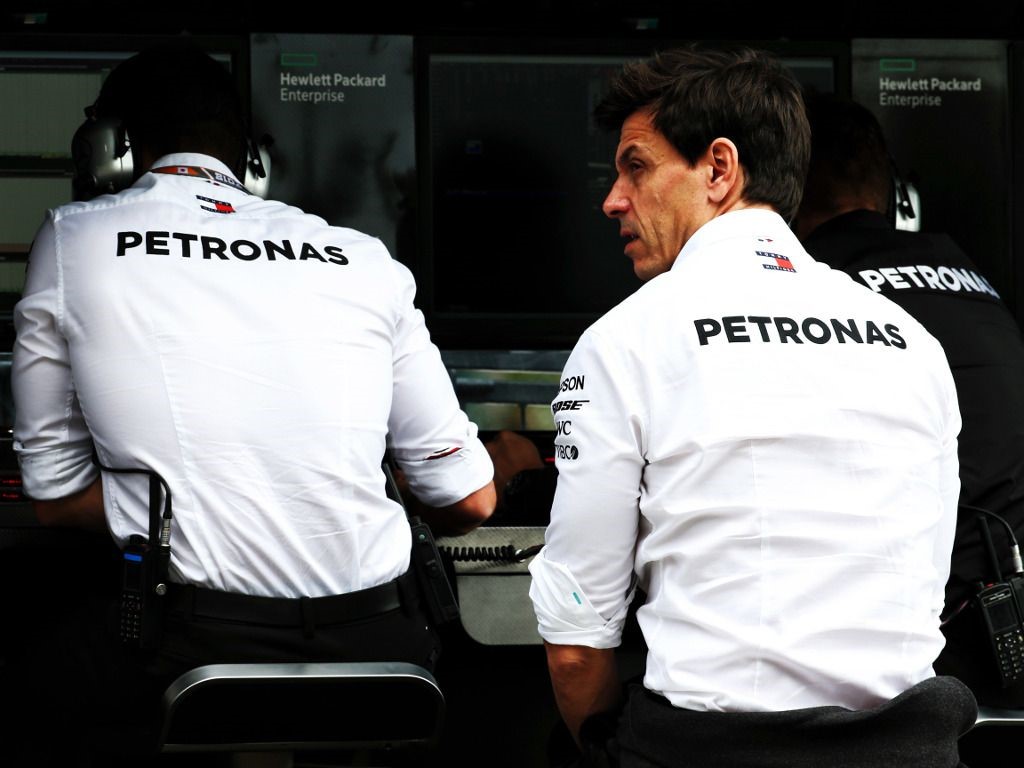
For the 2019 season, the team again retained both Hamilton and Bottas. In the opening race, both drivers locked out the front row with Hamilton taking pole position. Bottas overtook Hamilton at the start and took his first victory since the 2017 Abu Dhabi Grand Prix, with Hamilton managing to give the team a 1-2 finish after fending off Red Bull's Max Verstappen. The team continued the strong performance through the first half of the season. By the summer break, Mercedes had won 10 out of 12 races with Hamilton taking 8 victories to Bottas's 2, securing 1-2 finishes at the first 5 races of the season. The team would go on to take the both the drivers and constructors titles for the sixth consecutive year.
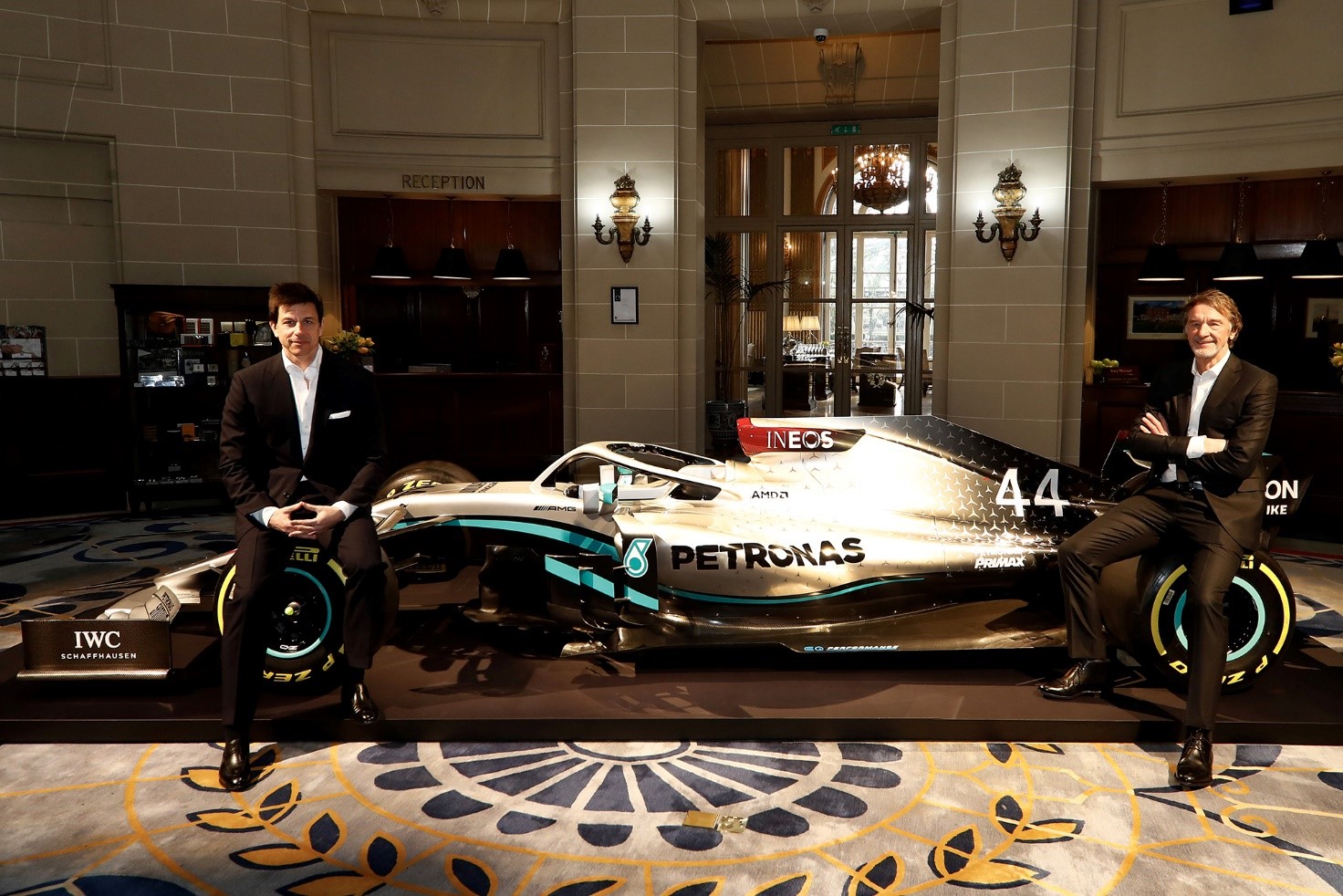
Toto Wolff and Sir Jim Ratcliffe with the new 2020 Mercedes livery.
The team debuted their "Dual-Axis-Steering" system during pre-season testing for the 2020 season. This allows the driver to change the toe of the front wheels by pushing or pulling on the steering wheel. This allows the driver to optimise the car for better tyre warming on the straights with zero toe, or better mechanical grip in the corners with positive toe. The system was allowed for the 2020 season, but has been made illegal for 2021. The team would go on to win both the drivers and constructors championships.
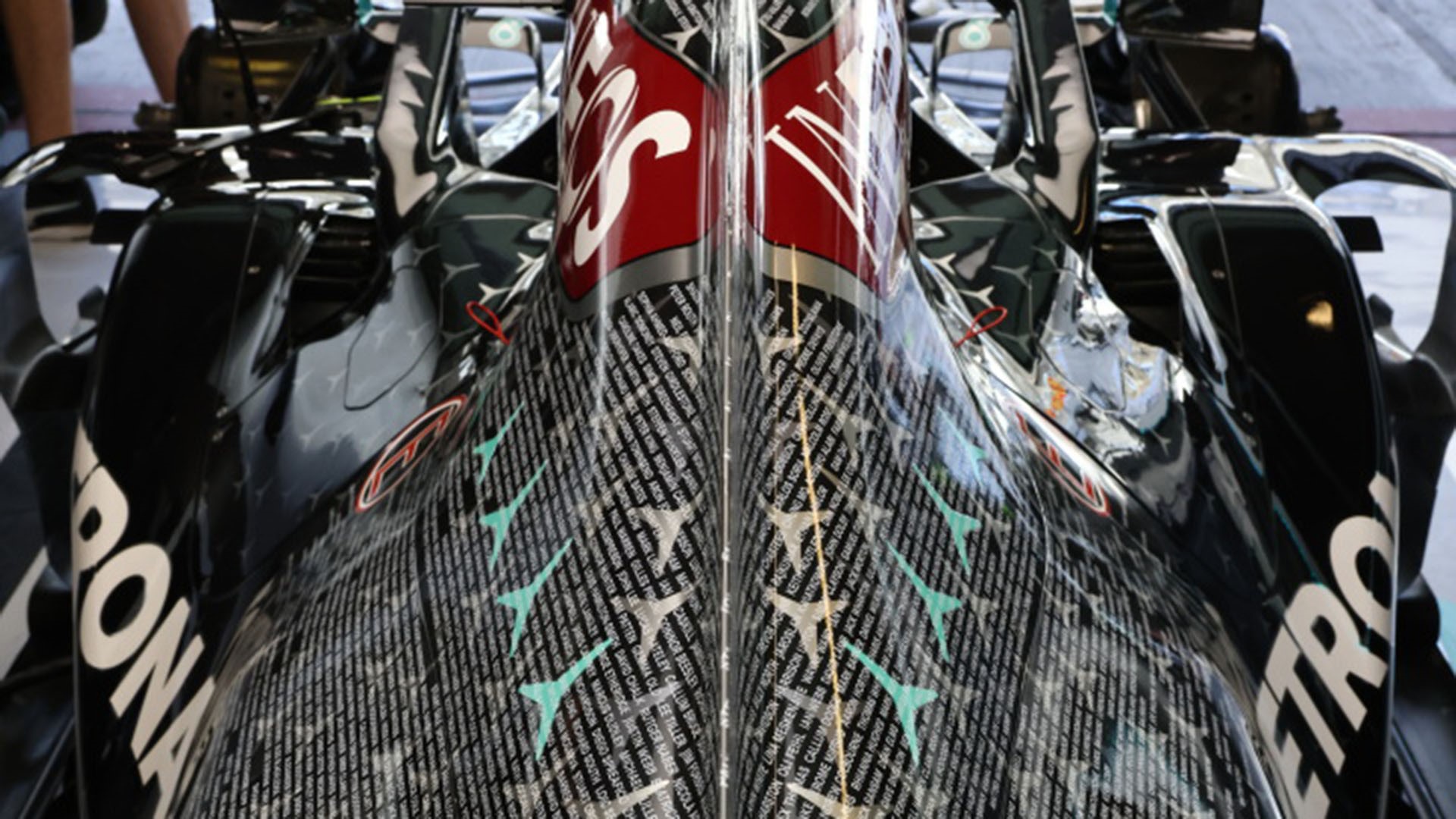
“We have a very special surprise this weekend in Abu Dhabi for our team members,” said Team Principal Toto Wolff in 2020. “We'll be running a slightly different livery on Saturday and Sunday featuring everyone's name on the car to honour the huge commitment and determination from everybody in Brixworth and Brackley”.
Before the penultimate round of the season, the 2020 Sakhir Grand Prix, Hamilton was forced to sit the race out following a positive coronavirus test, with Williams driver and Mercedes junior George Russell replacing him.
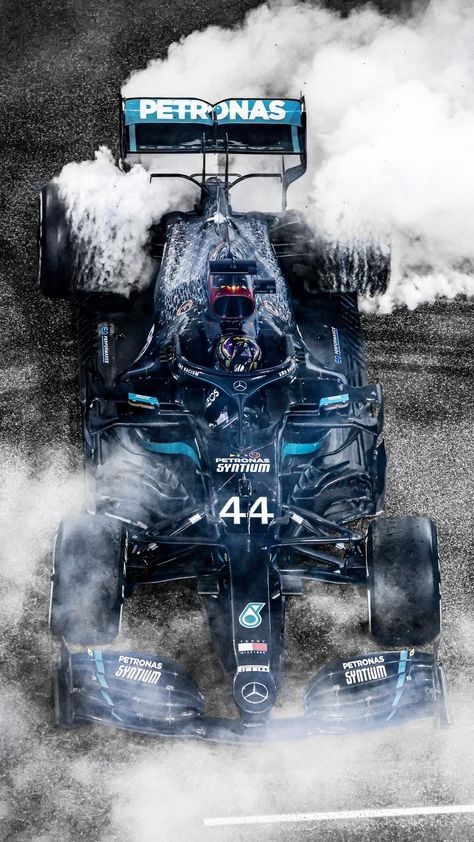
For one last time in 2020.
Engine supplier
Mercedes-Benz returned to Formula One as an engine supplier in 1994 in partnership with Ilmor, a British independent high-performance autosport engineering company with its manufacturing centre based in Brixworth, Northamptonshire. After acquisition by Mercedes, the company is now called Mercedes AMG High Performance Powertrains. It supplied Sauber for one season, then switched to McLaren in 1995 for a highly successful 20-year partnership. In 2009, Mercedes also became suppliers of Brawn GP (later acquired to become the Mercedes-Benz factory team) and Force India, later known as Racing Point. A fourth team was added to the supplying program in 2014, Williams. The 20-year long partnership with McLaren ended in advance of the 2015 season. At this time, Mercedes supplied engines to the Lotus F1 Team for one season, before switching to Manor in 2016.
The manufacturer has collected more than 100 wins as engine supplier and is ranked fourth in Formula One history. Nine Constructors' and thirteen Drivers' Championships have been won with Mercedes-Benz engines. For 2021, McLaren is due to use Mercedes engines once again.
Toto Wolff
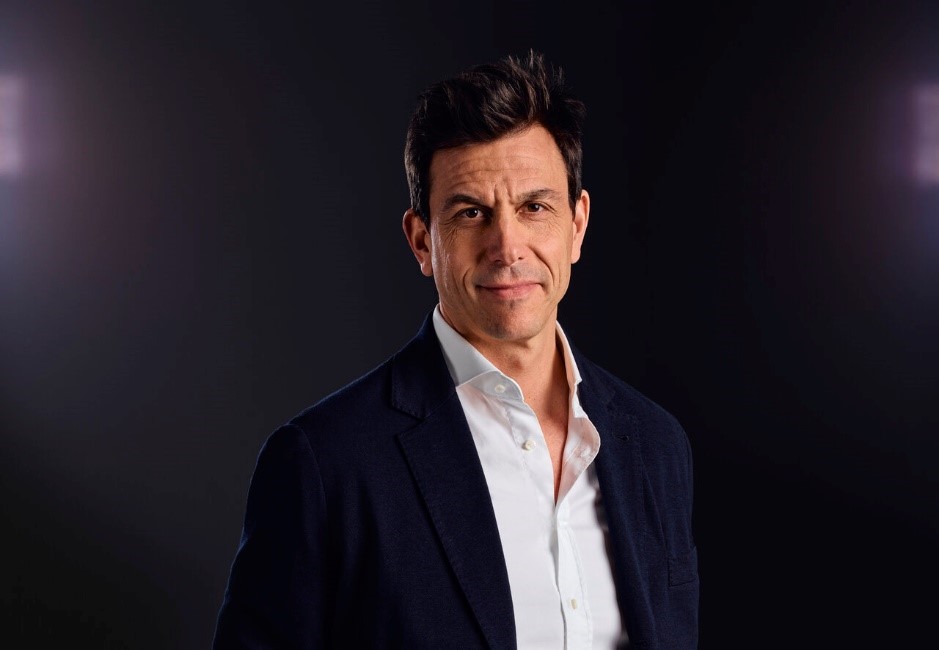
Torger Christian, "Toto", Wolff is an Austrian motorsport executive, investor and former racing driver. He holds a 33% stake in the Mercedes-AMG Petronas F1 Team and is Team Principal and CEO of the team.
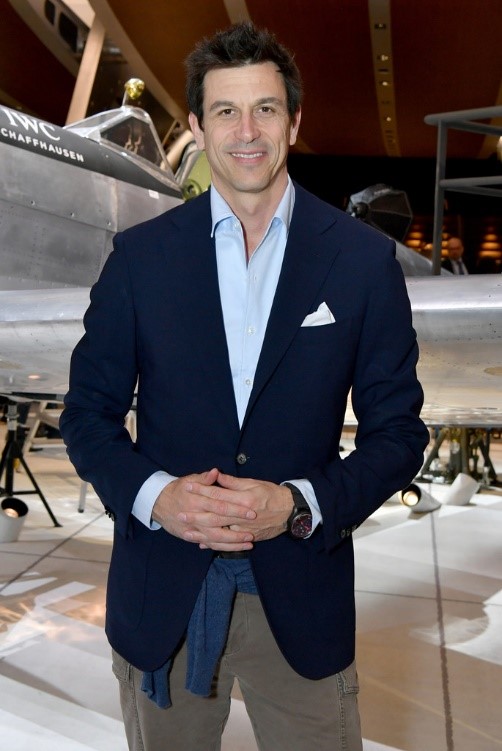
Wolff was born on 12 January 1972 in Vienna to a Polish mother and a Romanian father. His mother was a physician. He grew up in the city and was educated in a French school there, despite not coming from a wealthy family. Wolff's father was diagnosed with brain cancer when he was eight years old. His parents separated following his father's diagnosis. His father died of the disease during Wolff's adolescence.
After dropping out of the Vienna University Economics and Business, Toto founded one of the earliest tech-focused venture capital firms in Europe, making a string of high-profile deals in the late 1990s and early 2000s.
Wolff started his motorsport career in 1992 in the Austrian Formula Ford Championship, driving in Austrian and German Formula Ford in 1993 and 1994. In 1994, he won the 24 Hours Nürburgring in his category. In 2002 he finished in sixth place in the N-GT category in the FIA GT Championship and won one race. He switched to the Italian GT Championship in 2003, winning a race in 2004 with Lorenzo Case while also teaming with Karl Wendlinger in the FIA GT Championship. Wolff was runner up in the Austrian Rally Championship in 2006 and winner of the 2006 Dubai 24 Hour. He has also served as an instructor at the Walter Lechner Racing School and, in 2009, became a lap-record holder on the Nürburgring Nordschleife in a Porsche RSR.
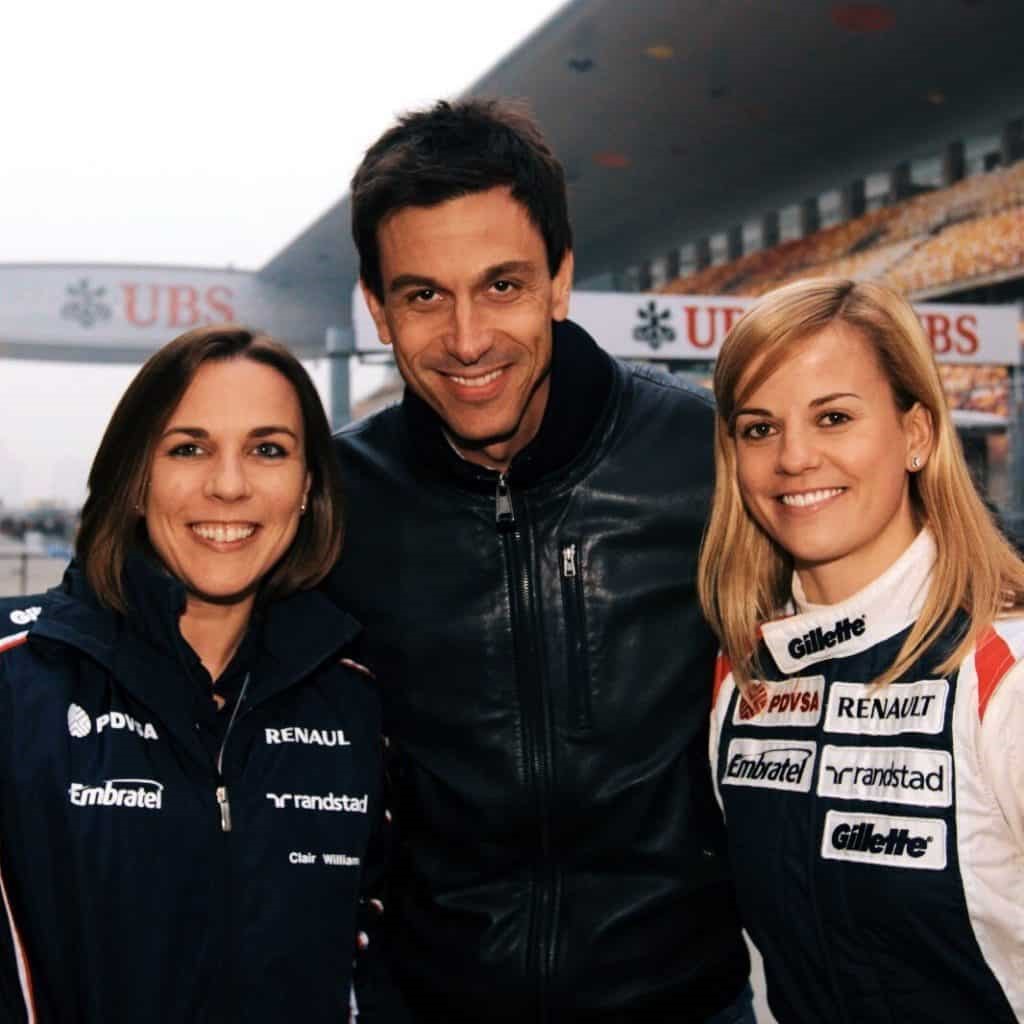
Toto Wolff with Claire Williams and Susie Stoddart Wolff.
In 2009, Wolff bought a share of the Williams Formula One Team and joined the board of directors. In 2012, he was named executive director of Williams F1 and the team took its last race win to date at that year's Spanish Grand Prix with Pastor Maldonado.
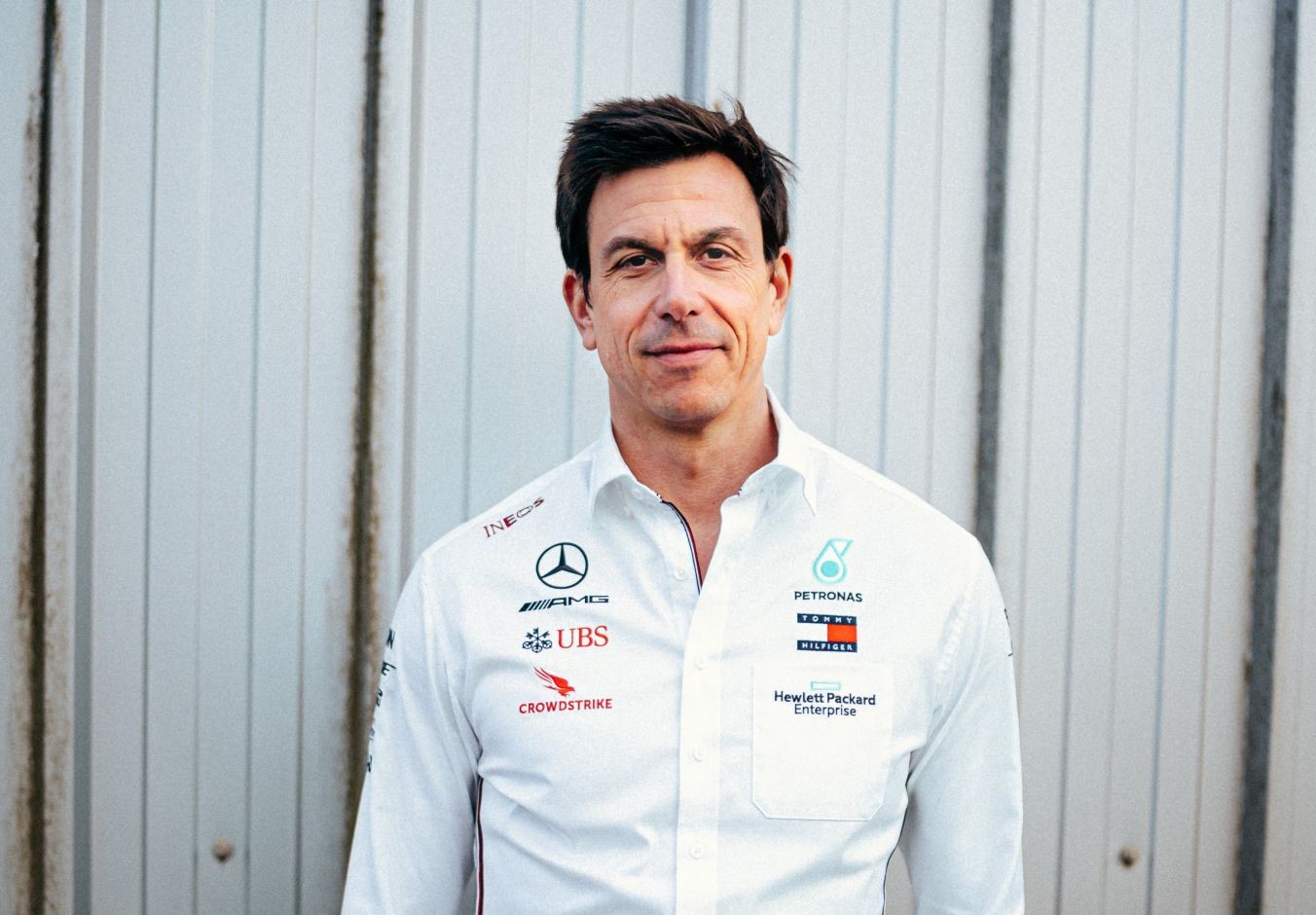
In January 2013, Toto left Williams F1 to become an executive director of the Mercedes AMG Petronas Formula One Team, with his business partner Rene Berger becoming non-executive director.
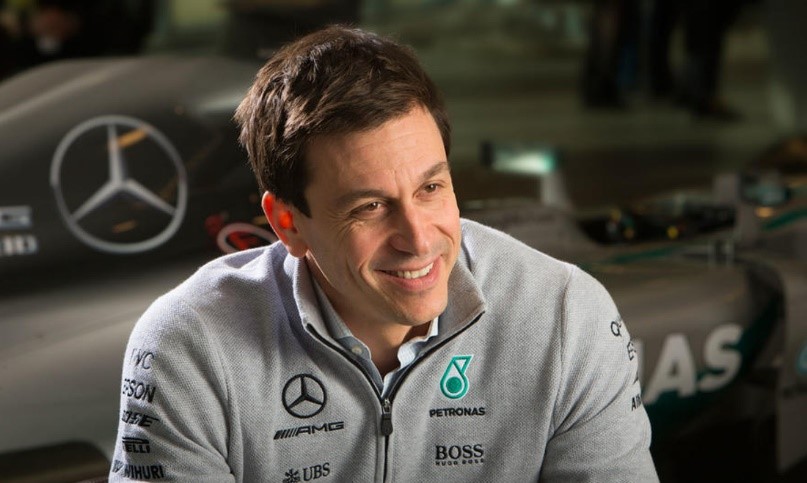
In addition to joining the team as managing partner, he also acquired 30% of Mercedes-Benz Grand Prix Ltd, with a further 10% held by Niki Lauda and 60% by the parent company.
Wolff took over the co-ordination of all Mercedes-Benz motorsport activities, a responsibility previously held by Norbert Haug.
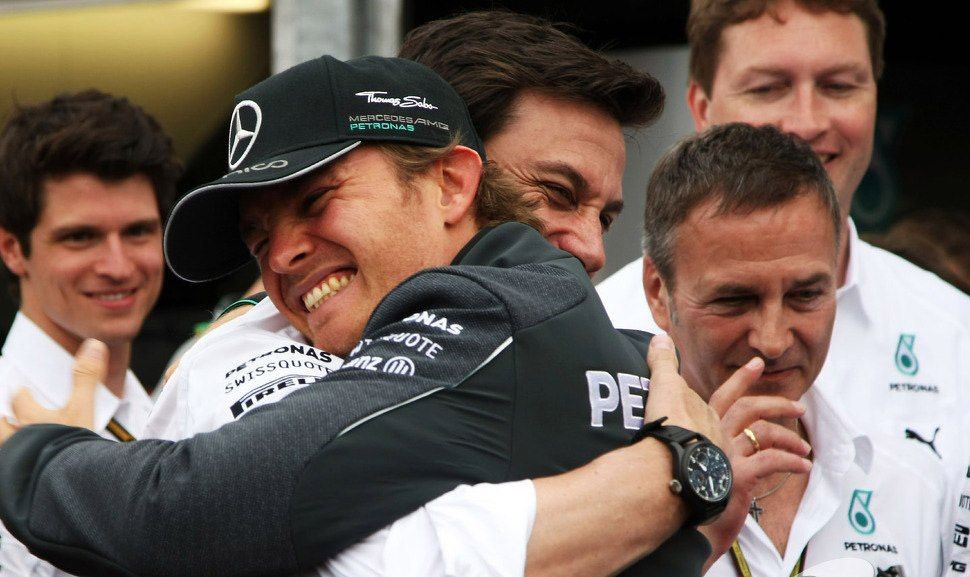
Nico Rosberg and Toto Wolff, Monaco 2014.
In 2014, he sold two-thirds of his Williams shares to American businessman Brad Hollinger.
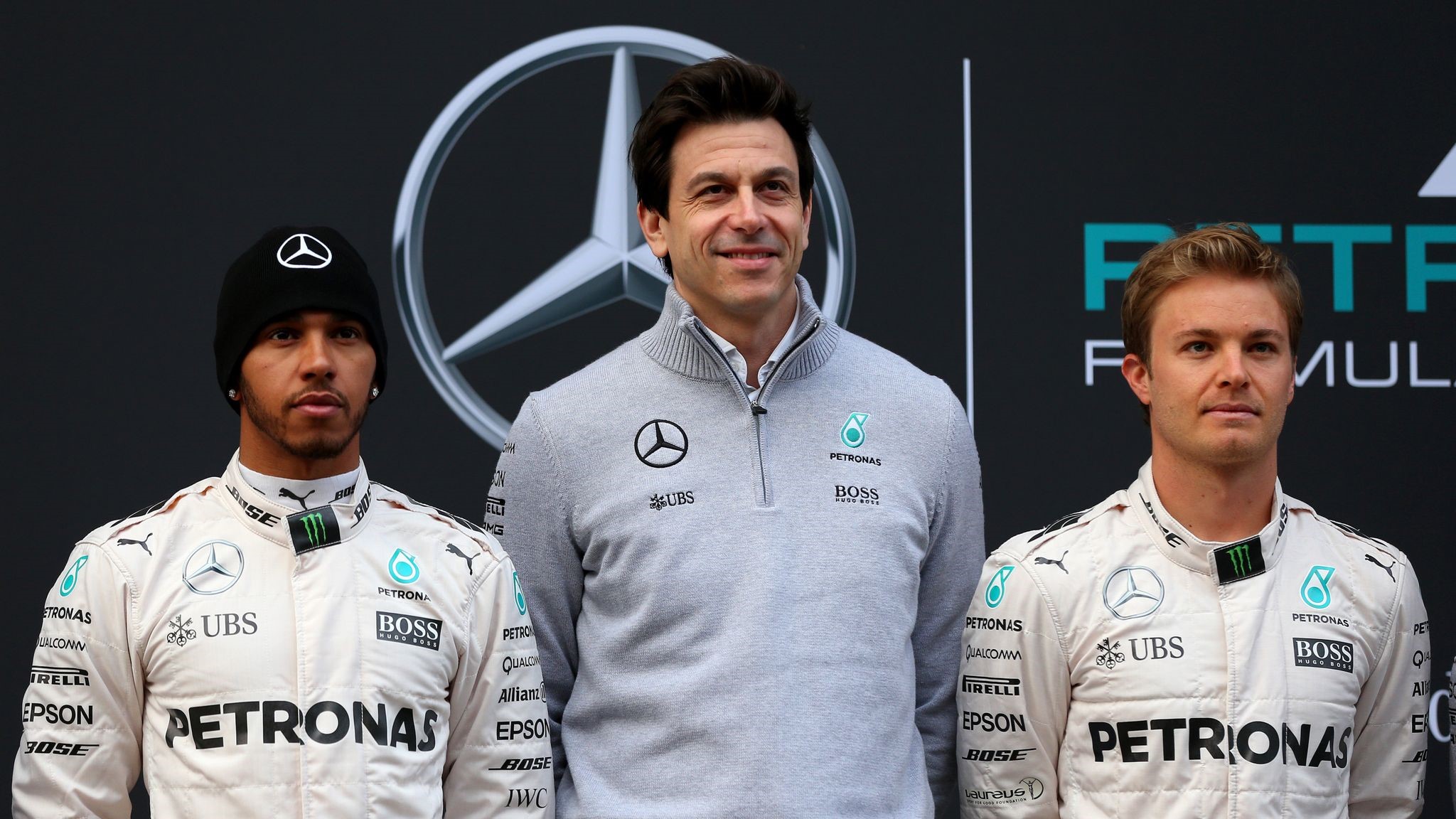
Lewis Hamilton, Toto Wolff and Nico Rosberg in 2016.
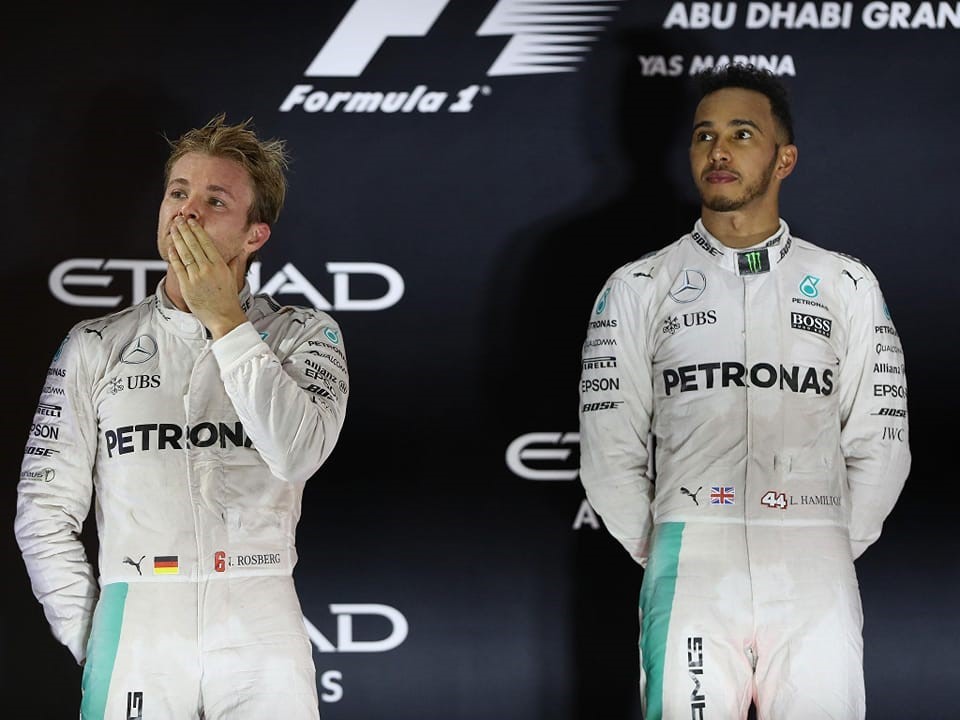
"There was such a division between the two sides of the garage that even the mechanics had become adversaries and the engineers lived in this climate. So, without warning and without asking us, Toto transferred my entire team of mechanics to Lewis's car and all of his mechanics were transferred to my car for the rest of the season. It was crazy, my mechanics, whom I totally trusted and who were also my friends, were transferred to Lewis's car and I had enemies working on my car”. Nico Rosberg
On 9 March 2016, he sold his remaining shares in the Williams team.
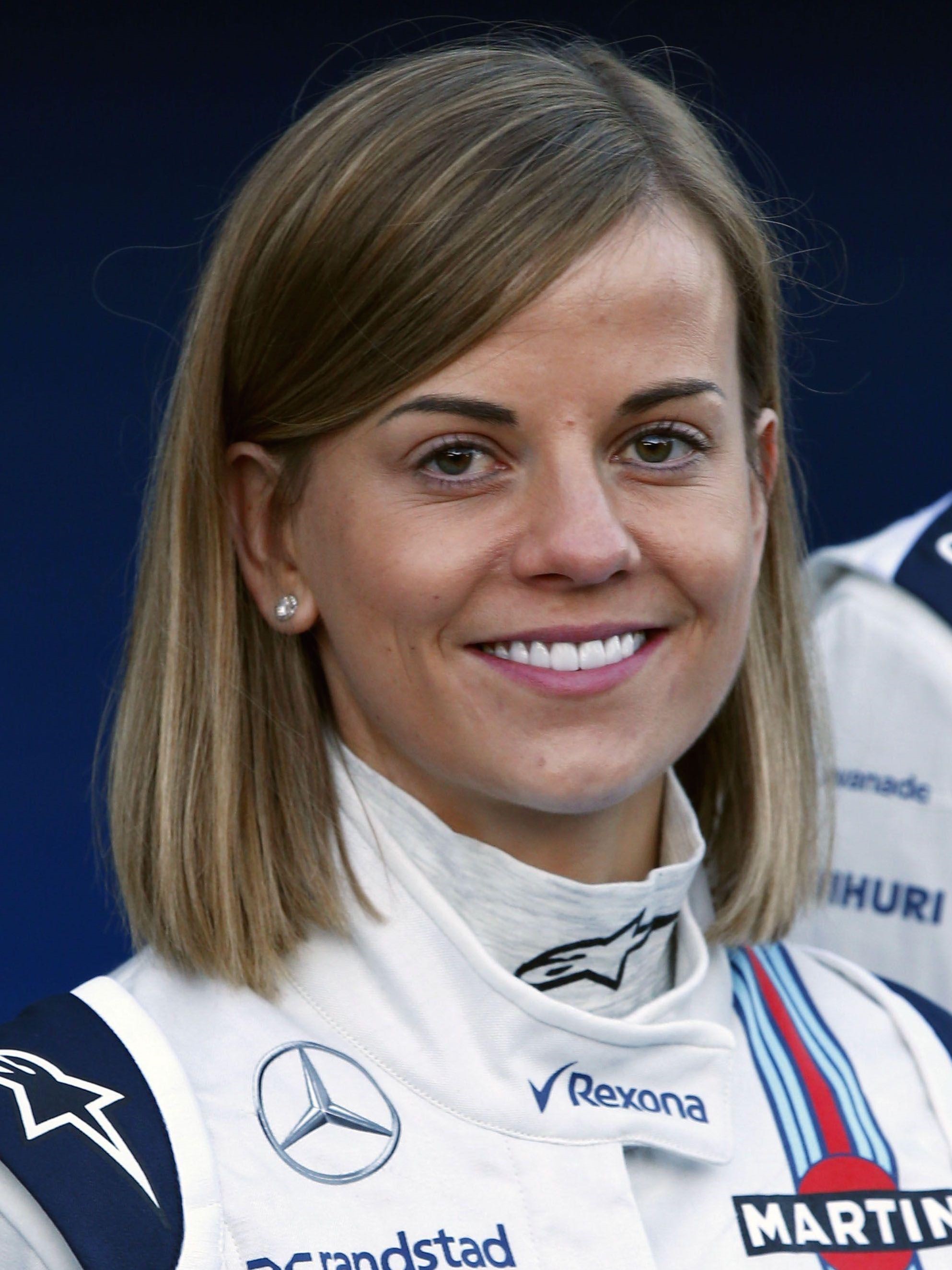
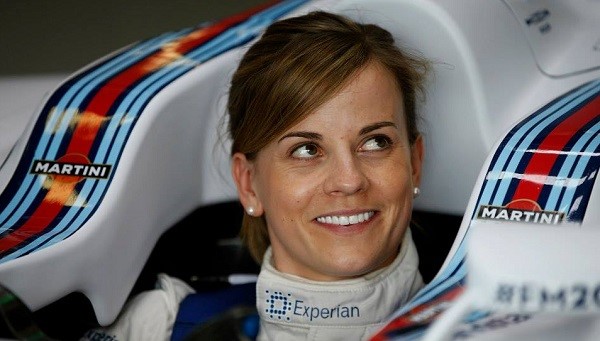
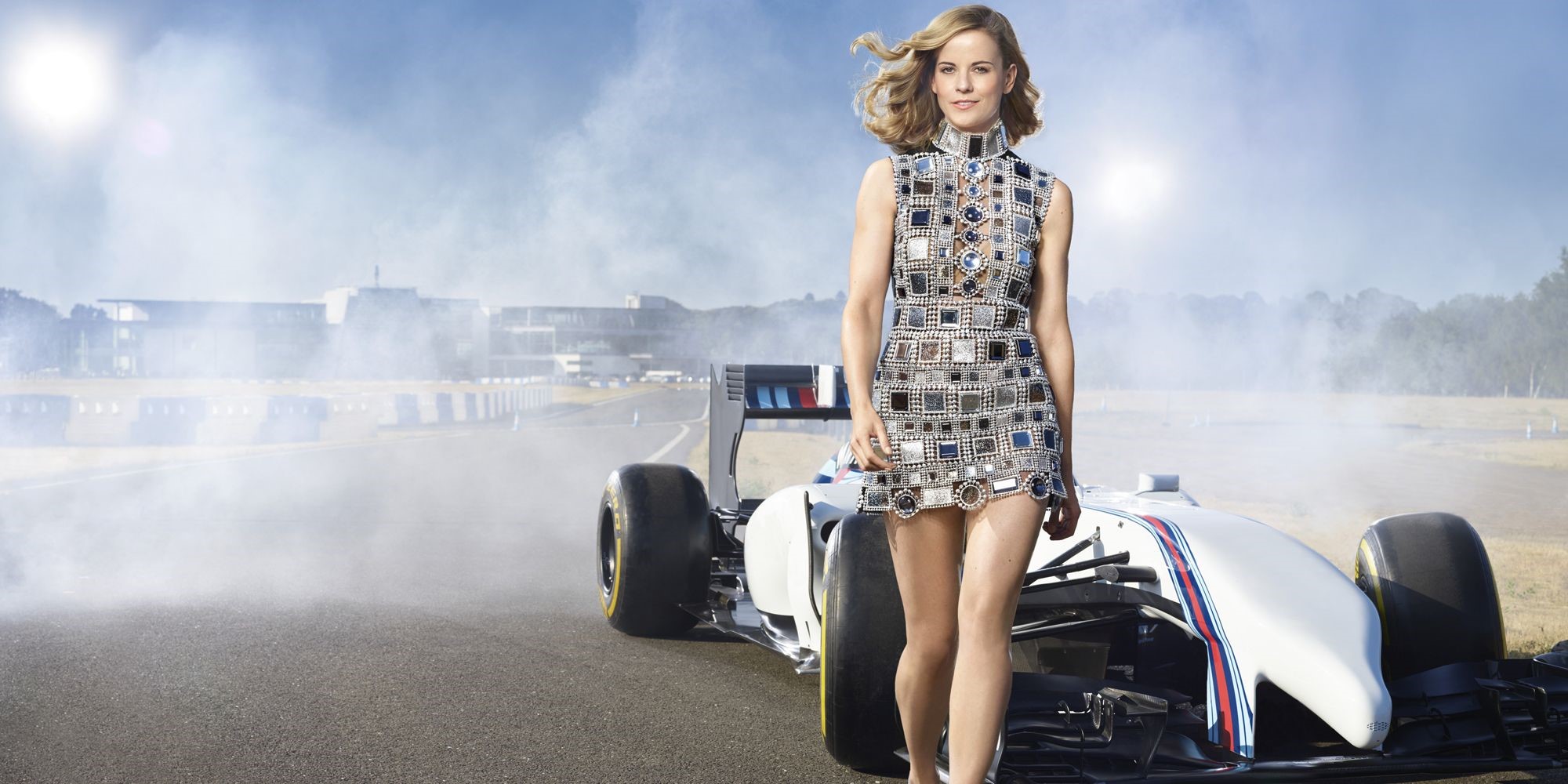
Susie Wolff Stoddart at Williams.
As co-owner of both Williams F1 (where wife Susie worked as a test driver until November 2015) and Mercedes Grand Prix, Wolff celebrated numerous podiums and successes for both teams, such as a 1–2–3–4 finish at Spielberg, Austria, in his 'home race' as well as at Monza, Italy, in both Qualifying and Race classifications.
In 2020, Mercedes won its record seventh consecutive double world championship. The record had previously been held by Ferrari when it won five consecutive double world championships between 2000 and 2004.
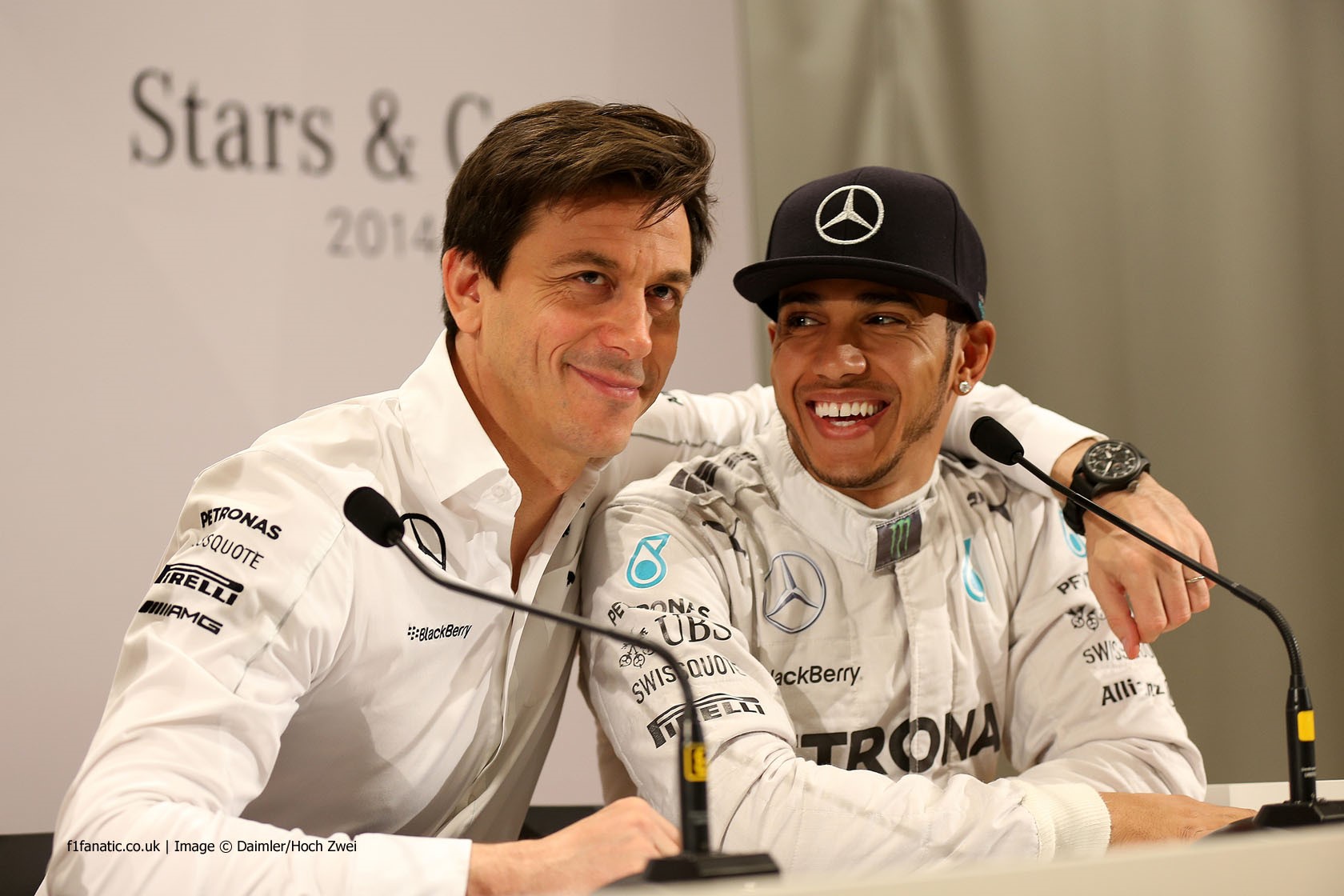
Toto Wolff and Lewis Hamilton.
Mercedes also hold the record of seven consecutive Driver's Championships from 2014 to 2020. This record was also previously held by Ferrari with five titles from 2000 to 2004. In 2020, Mercedes' record of seven consecutive Constructor's Championships surpassed that of Ferrari's six consecutive Constructor's Championships set between 1999-2004. Wolff's achievements were recognised through the presentation of a John Bolster Award from Todt at the 2018 Autosport Awards. Wolff subsequently received the President's Award from Todt, along with team non-executive chairman Niki Lauda, at the 2018 FIA Prize Giving Gala held in St Petersburg, Russia.
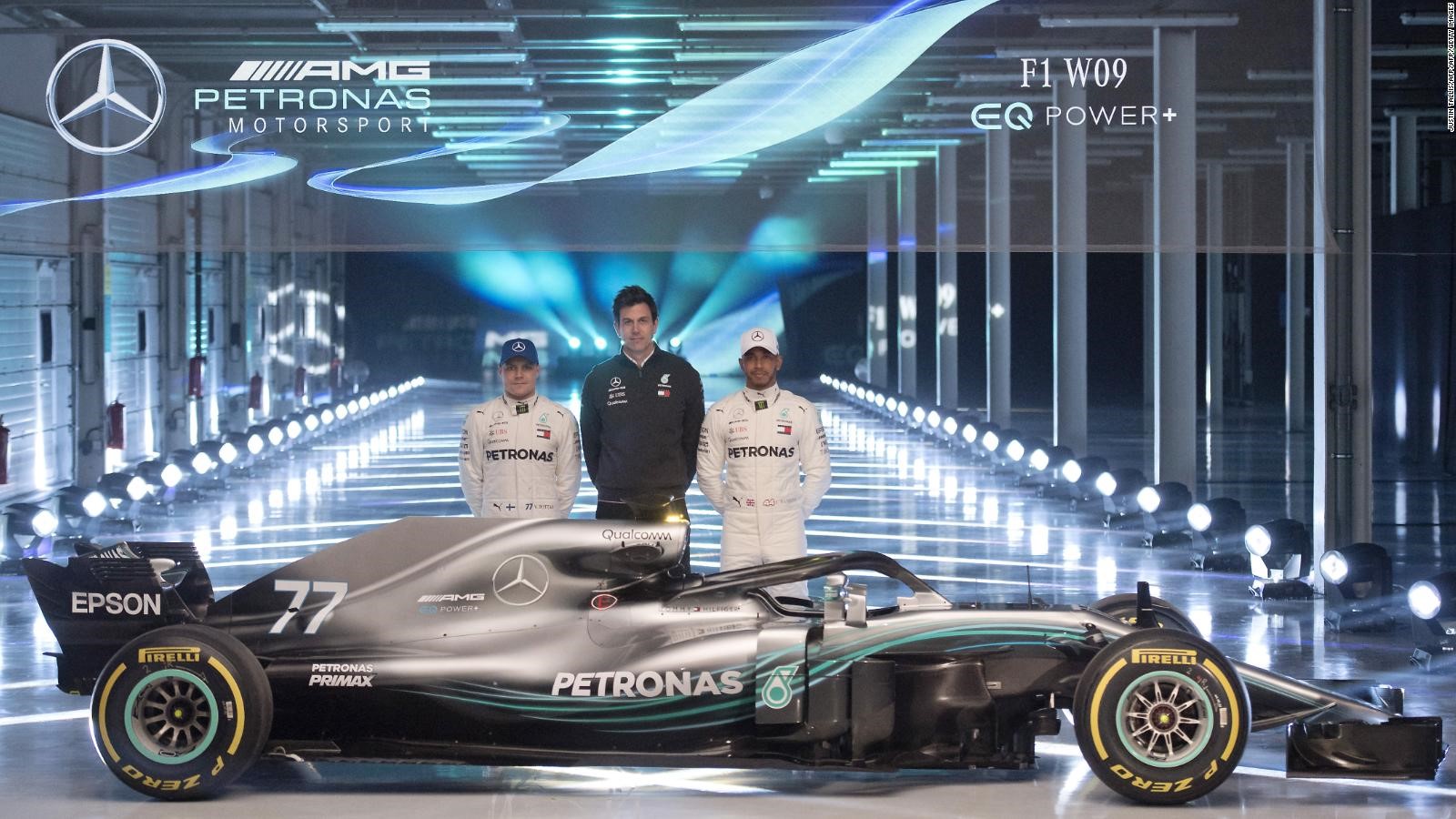
Toto Wolff with Mercedes F1 team Hamilton - Bottas in the 2018 season.
2018 proved the most successful motorsport year in the history of Mercedes-Benz.
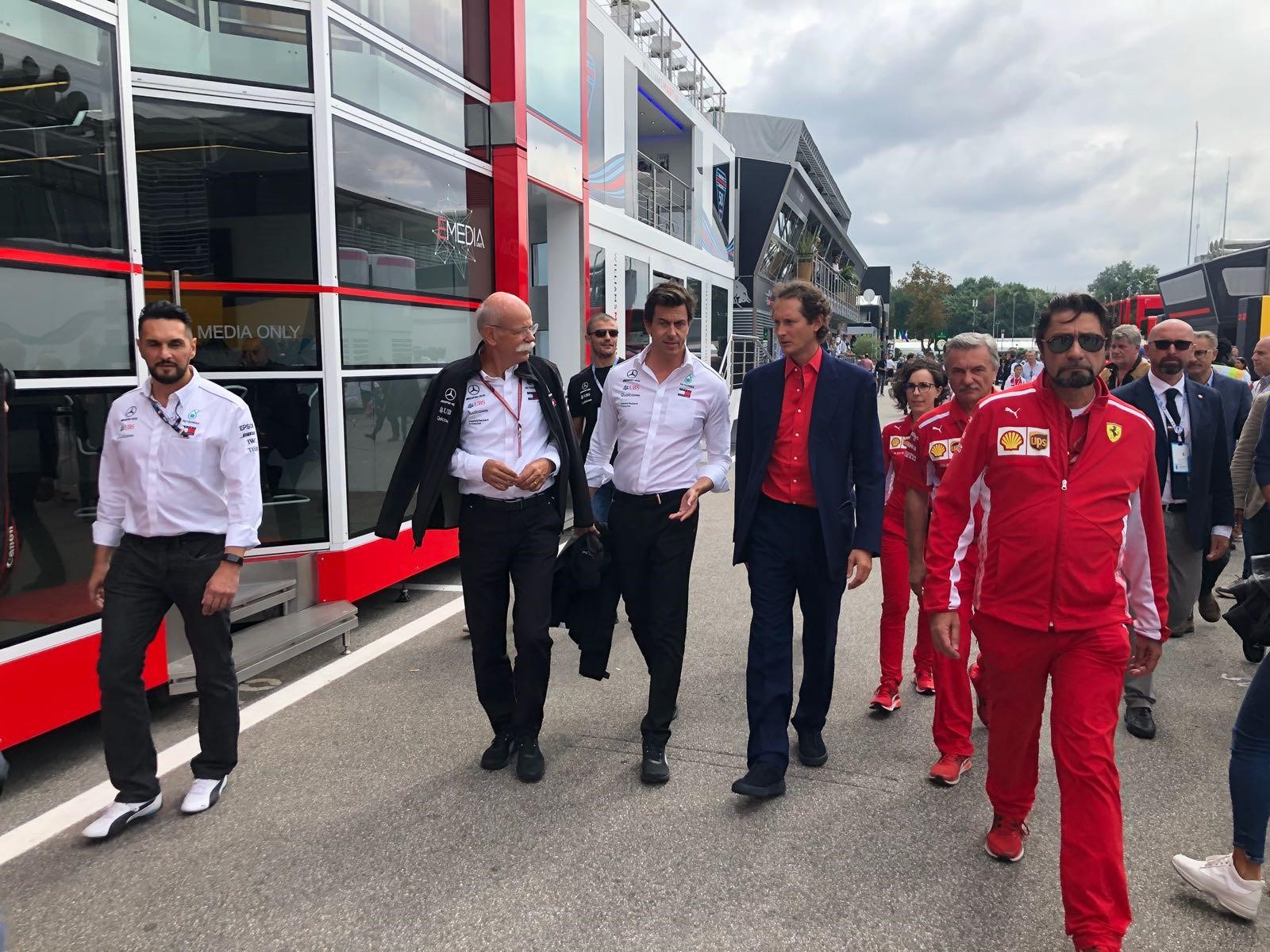
President of Ferrari John Elkann and president of Mercedes Dieter Zetsche with Toto Wolff at Italian GP in Monza on September 2, 2018.
The company won both F1 titles, F2 with George Russell, European F3 with Mick Schumacher, all three titles in its final season of DTM competition with Gary Paffett securing the drivers' title, both F1 eSports titles and numerous championships in customer racing.
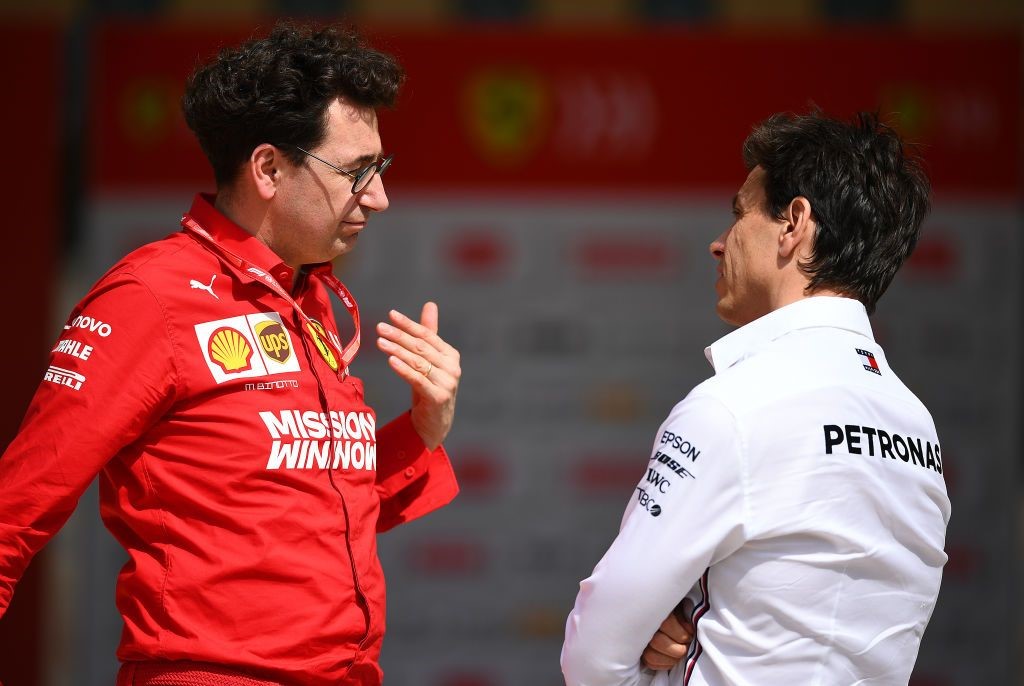
Ferrari Team Principal Mattia Binotto talks with Mercedes GP Executive Director Toto Wolff in the paddock before the F1 Grand Prix of Bahrain at Bahrain International Circuit, on March 31, 2019. Photo by Clive Mason/Getty Images.
For 2019, Mercedes continued its run of success by securing a sixth consecutive double world championship at the Japanese GP, when the team secured the Constructors' title and only one of Lewis Hamilton and Valtteri Bottas could still become Drivers' champion. This is an unprecedented achievement in the history of the sport.
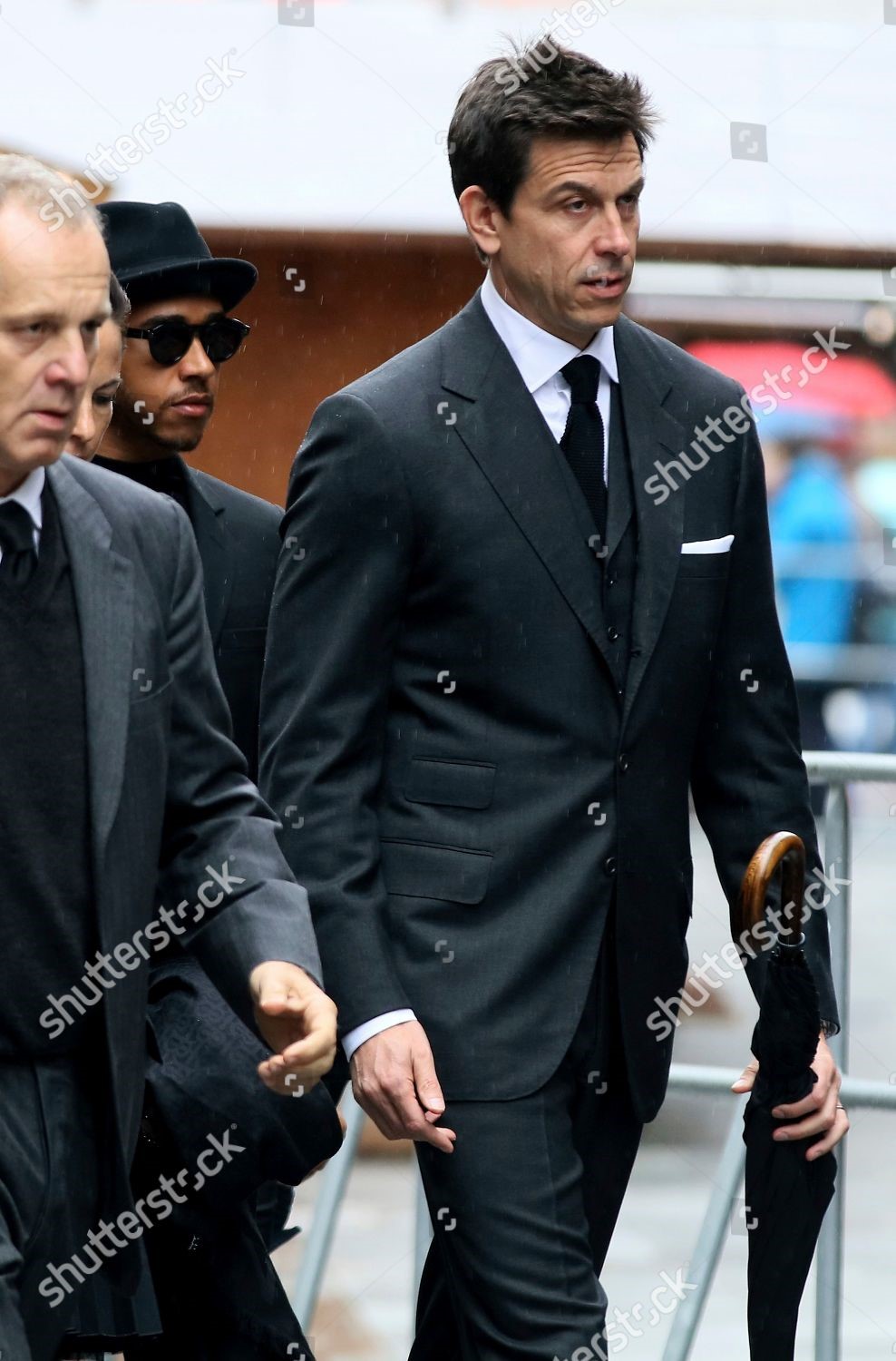
Toto Wolff at Lauda funeral in Vienna, Austria, in March 2019.
As of 2019, Wolff is the only Team Principal who has won more than five consecutive double world championships.
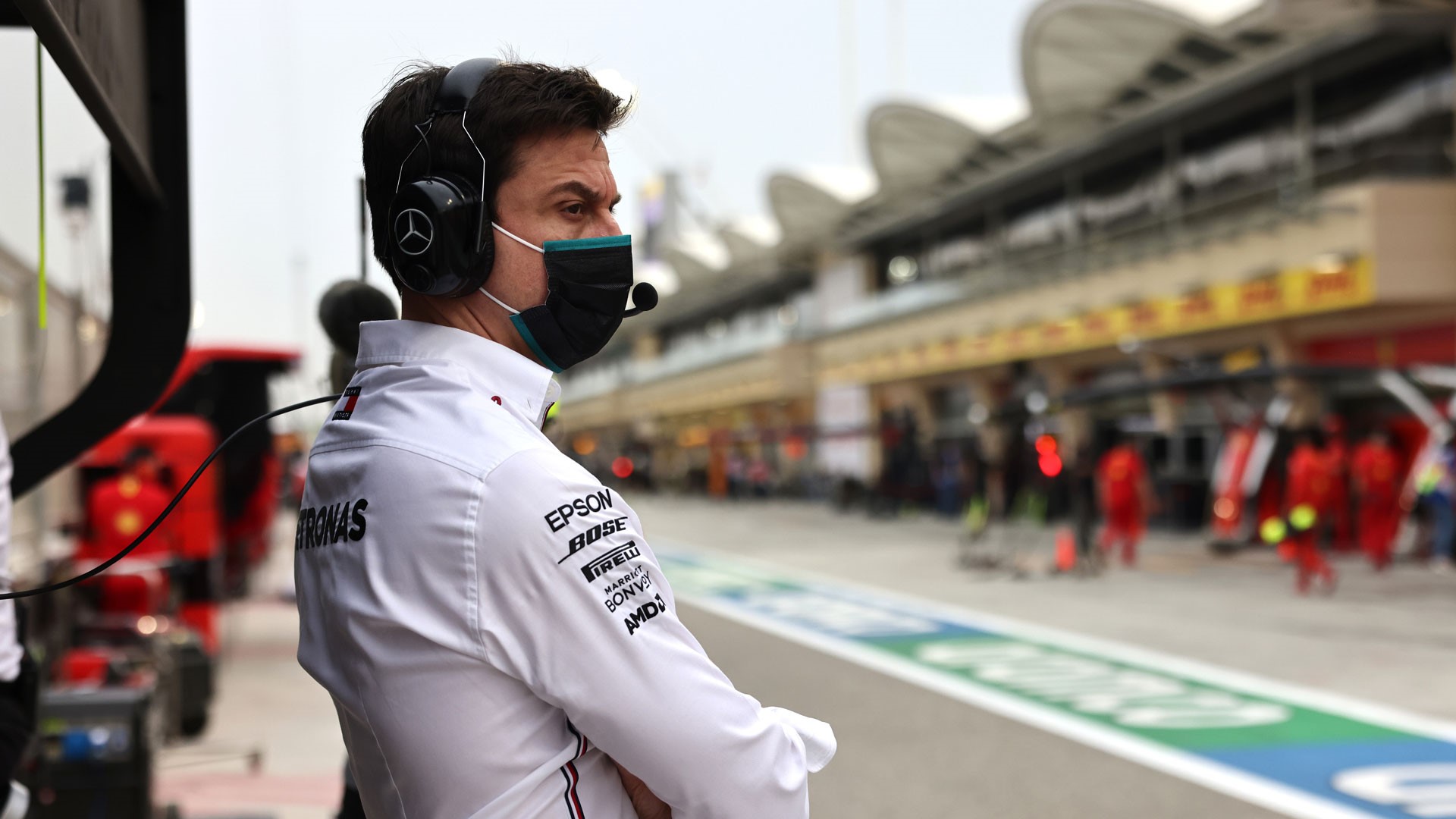
Toto Wolff at 2020 Bahrain Grand Prix.
In 2020, Mercedes has secured a seventh consecutive double world championship. This sets an all-time record of consecutive constructors' championships, ahead of the six achieved by Ferrari from 1999 to 2004. In the same season, Lewis Hamilton became the most successful driver in terms of race wins at the 2020 Portuguese GP and secured a seventh world drivers' championship at the Turkish GP to tie the all-time record held by Michael Schumacher.
Since the introduction of the turbo-hybrid regulations in 2014, Mercedes has won 106 of 149 races under Wolff's leadership. The team has taken 113 of 149 pole positions, 72 front-row lockouts and 218 from 298 possible podium finishes. Since Wolff joined Mercedes in 2013, the team has achieved a winning percentage of 65%.
Following the end of the 2020 F1 season, Wolff signed a new deal with Mercedes which would see him stay on as team principal and CEO for another 3 years.
As of 2020, Toto Wolff's net worth is estimated at CHF 700 million (2020).
Wolff founded investment companies Marchfifteen (1998) and Marchsixteen (2004), both of which initially focused on internet and technology company investments. Since 2003, he has concentrated on strategic investments in medium-sized industrial and listed companies. Investments included the German HWA AG, in which Wolff bought a 49% stake in 2006 listing the company on the stock exchange in 2007. The company ran the Deutsche Tourenwagen Masters race program for Mercedes-Benz, developing F3 engines and the Gullwing Mercedes-Benz SLS AMG GT3 racing car.
Other investments included BRR Rallye Racing, one of the largest rally parts dealers in Europe. Wolff is also co-owner of a sports management company with former F1 driver Mika Häkkinen and was involved in the management of racing drivers such as Bruno Spengler, Alexandre Prémat and Valtteri Bottas. In April 2020, the Austrian acquired a 4.95% stake in Aston Martin Lagonda Global Holdings plc as a financial investment. Wolff's partnership and operational role with Mercedes are unaffected by this transaction. In June 2020, he held a 5% stake in Williams F1 which was sold in the purchase of Williams by Dorilton Capital.
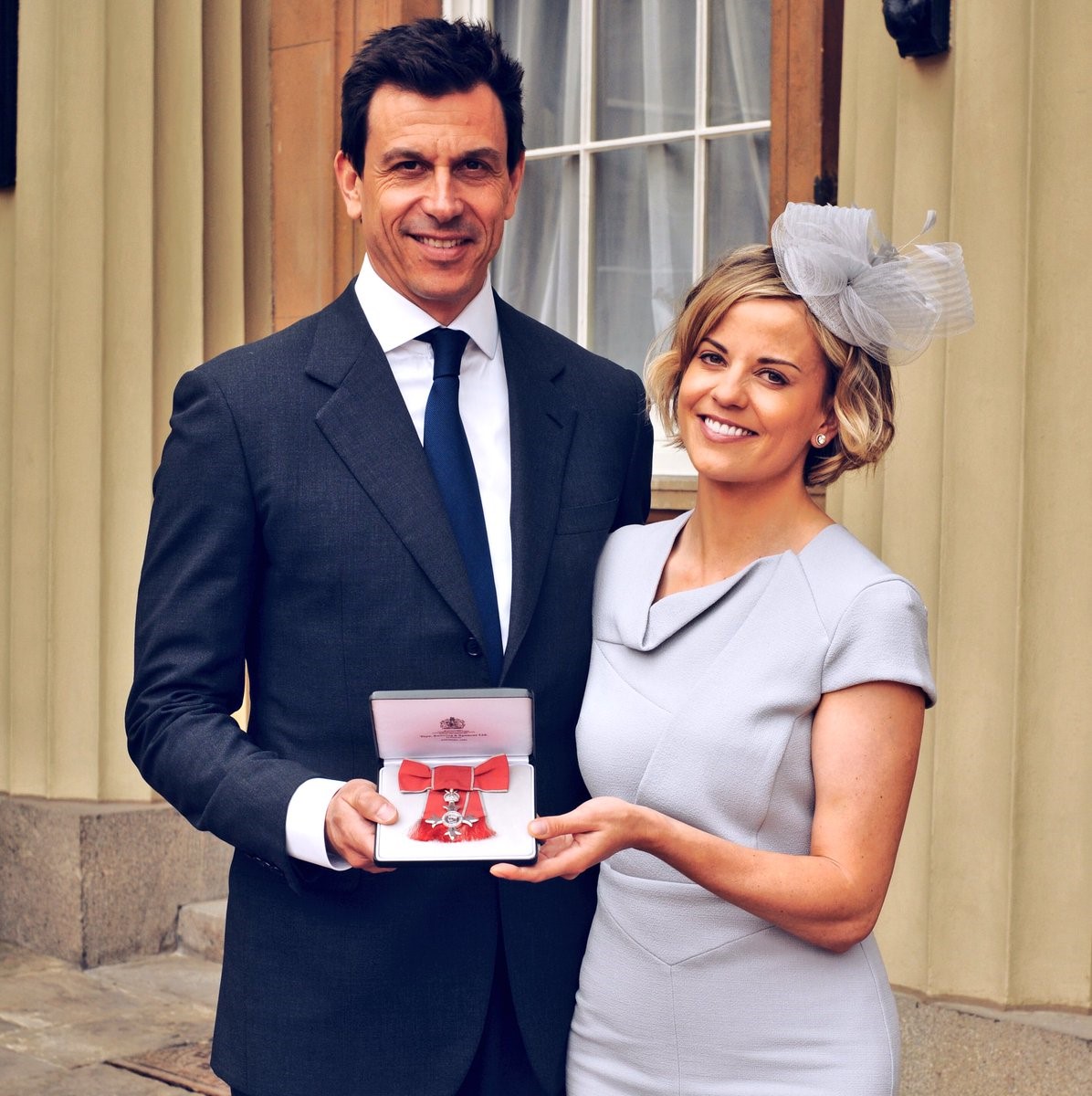
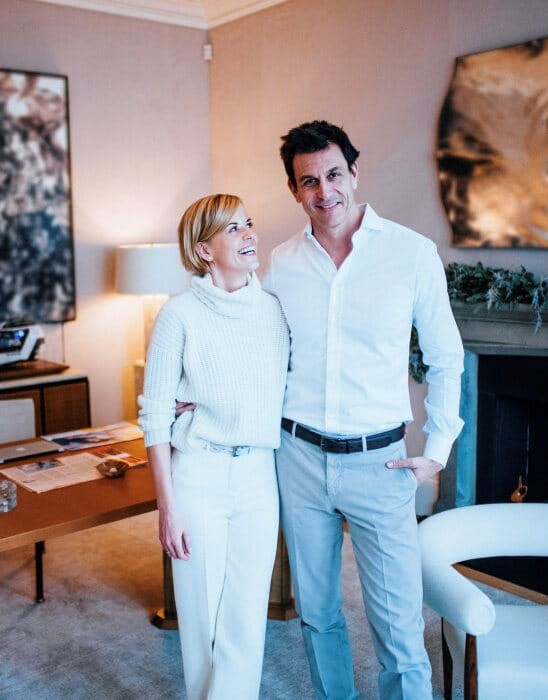
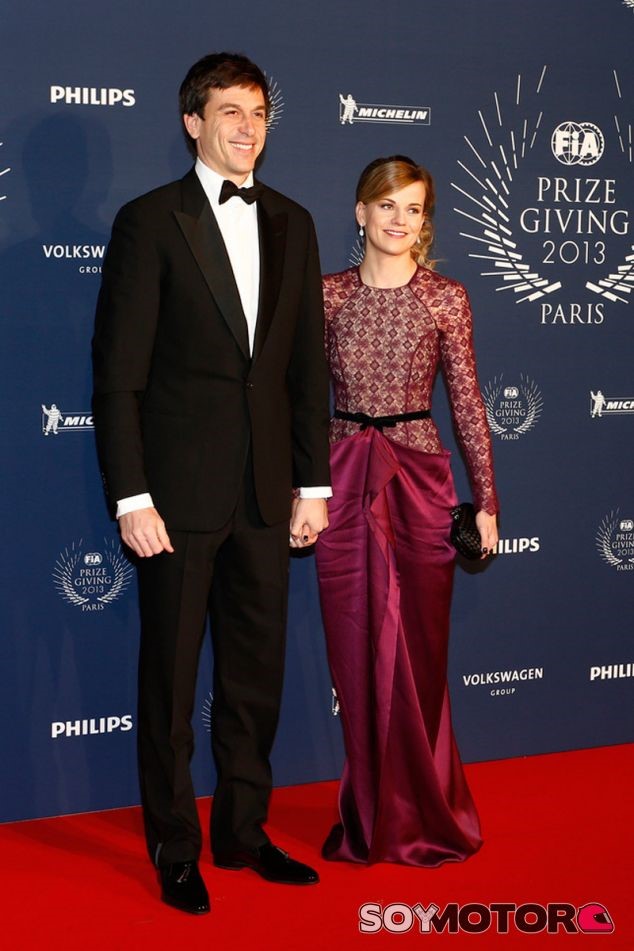
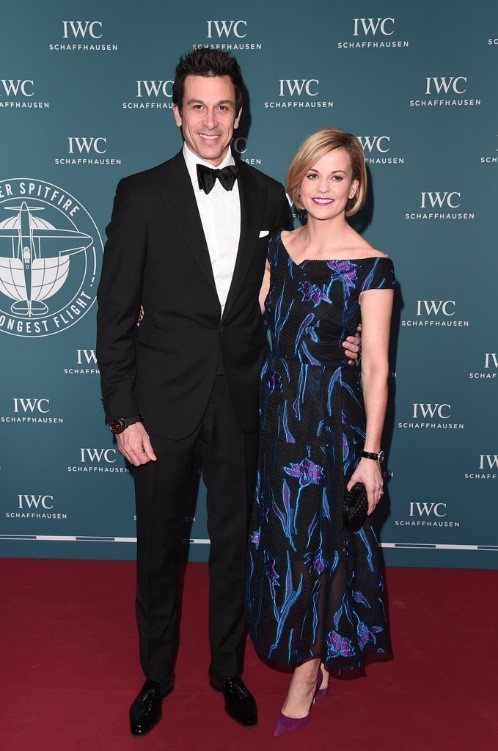
Toto and Susie Wolff.
Wolff lives with his second wife, the Scottish racer Susie Wolff (née Stoddart), between homes in Oxfordshire, England and Ermatingen at Lake Constance, Switzerland.
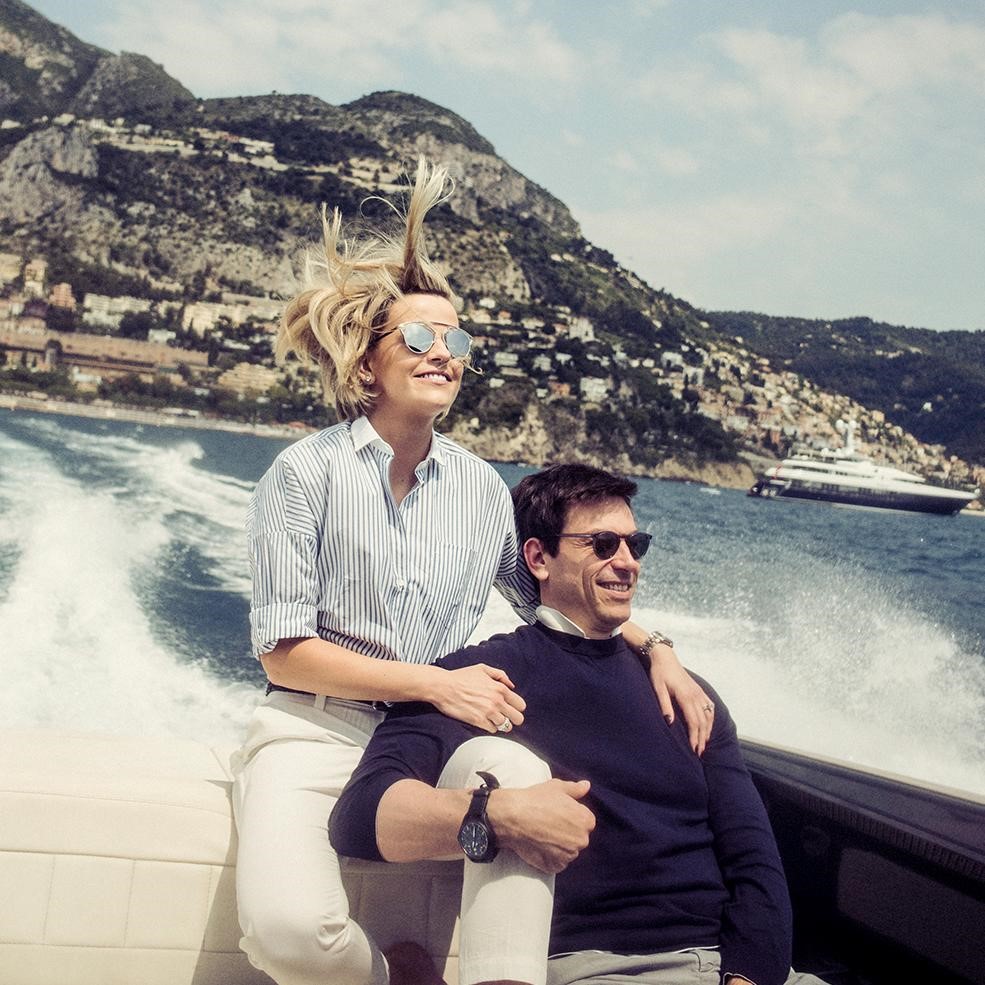
Susie and Toto Wolff.
On 11 April 2017, Susie announced on Twitter that she had given birth to their first child the previous day.
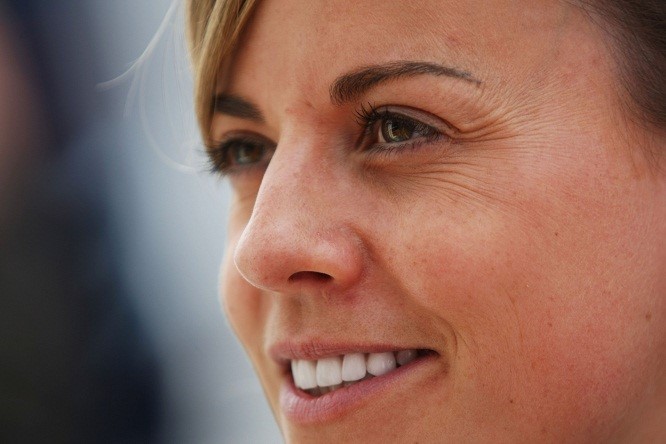
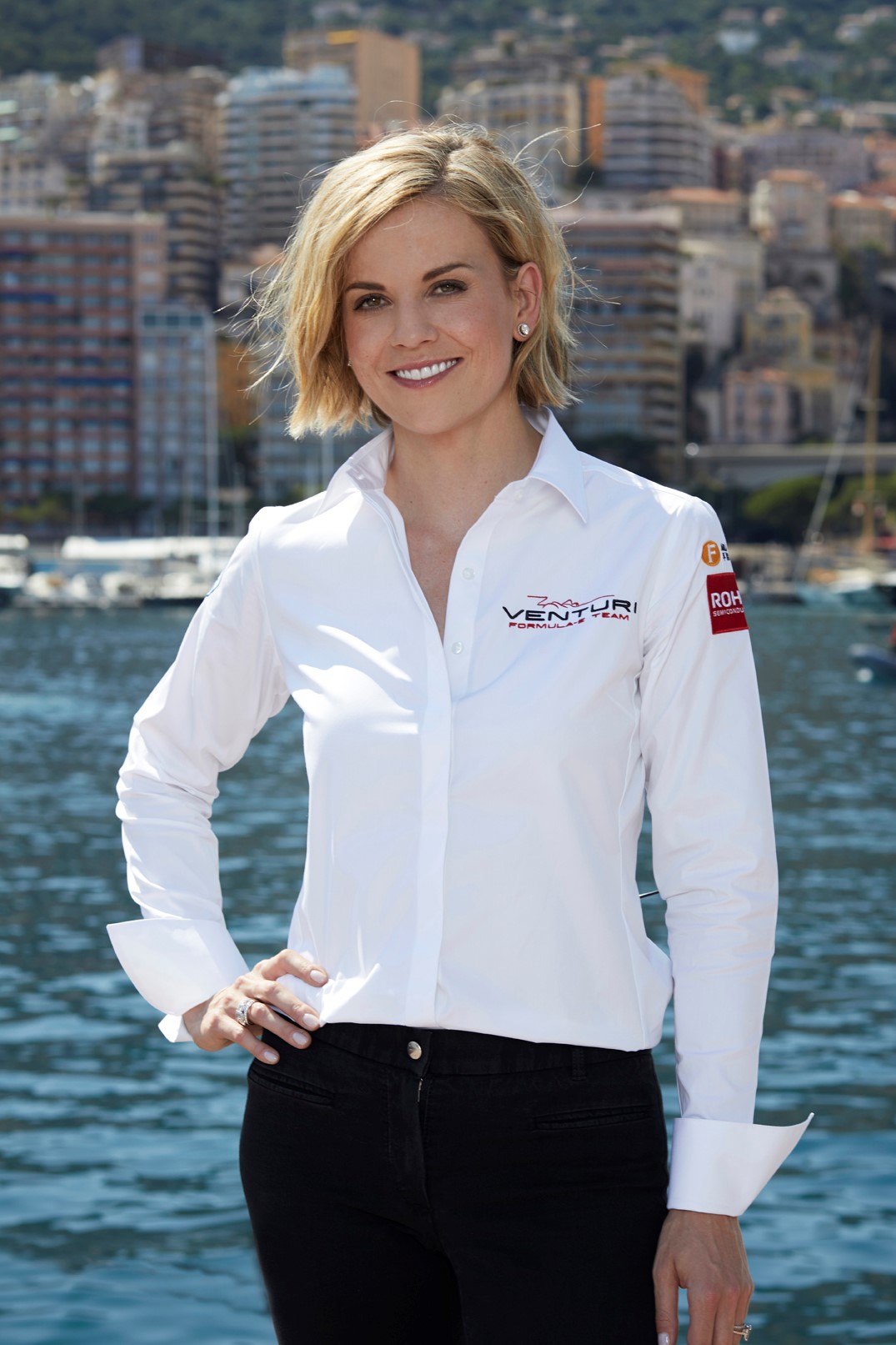
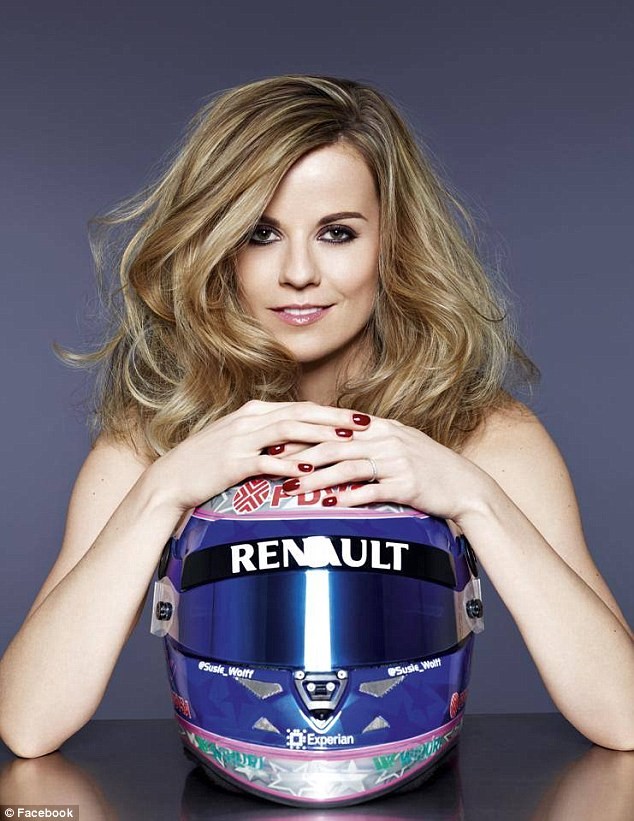
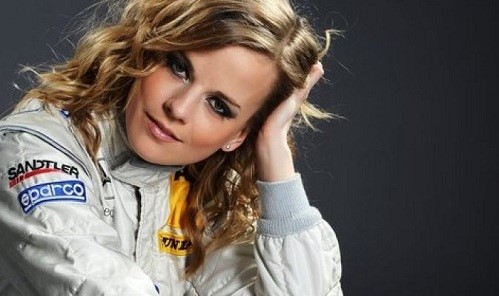
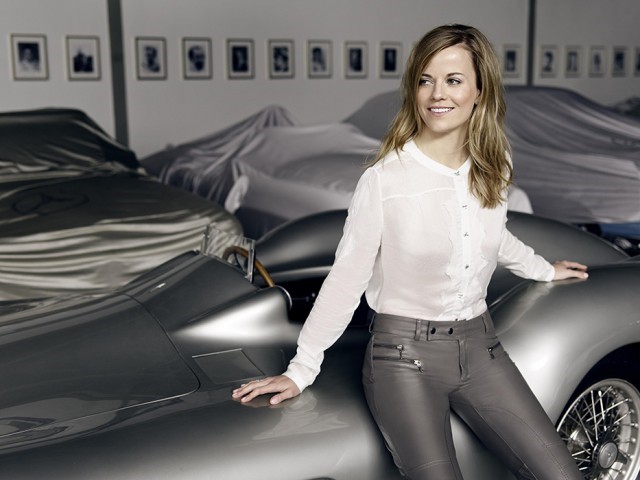
Susie Wolff.
Wolff also has overall responsibility for the Mercedes EQ Formula E Team and occasionally attends Formula E races.
Wolff speaks fluent German, English, French, Italian and Polish. He has two children from a previous marriage.
He was awarded an Honorary Doctorate from Cranfield University for his services to Motorsport in May 2021.
Mercedes F1’s Toto Wolff is selling his Ferraris. Published on 25th June 2021 by Garry Lu.
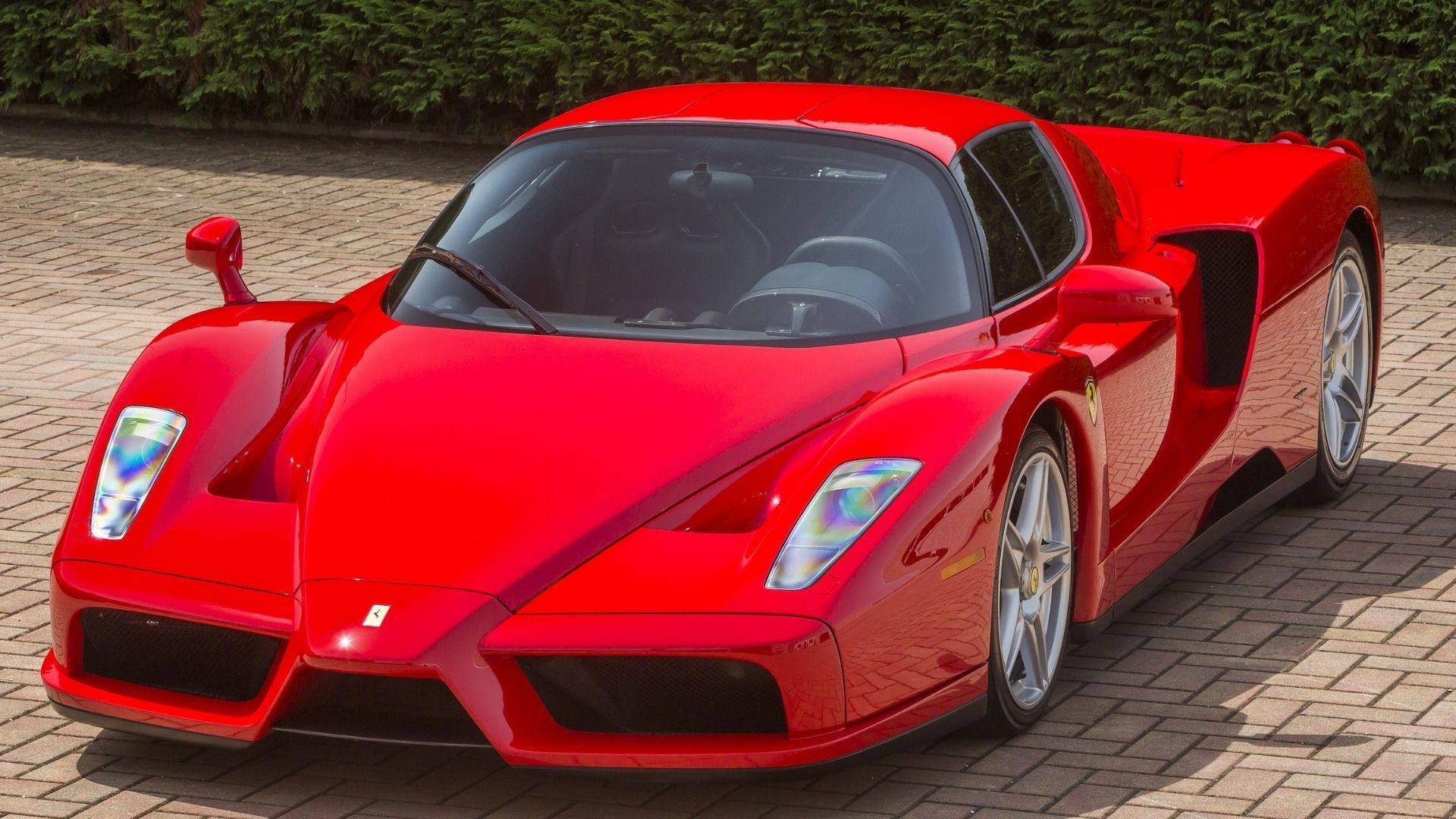
Toto Wolff’s Ferrari Enzo.
After handling the blockbuster sale of four-time Formula 1 champion Sebastian Vettel’s own rare, refined and highly-desirable Ferraris – taking the classic “bad breakup” route in his separation with his former F1 team – Tom Hartley Junior has now been entrusted with selling the sexy whips of Mercedes AMG Petronas F1 CEO & Team Principal, Toto Wolff.
“The motivation that drives me to give up these cars is simple: I don’t have time to drive them anymore. And I don’t think it would be nice to see me around driving a Ferrari, even though it’s a fantastic brand”. Toto Wolff said.
Wolff also explains that “I haven’t driven them for a long time” and that he decided “to switch to the electric models produced by Mercedes-Benz”. And, in fact, the low mileage of cars confirms this.
The Ferrari Enzo “has run” only 350 km since it was purchased, while LaFerrari Aperta — of which only 210 were produced — 2400 km.
“[Toto’s] busy schedule doesn’t allow him the time to drive them… I’m not sure if Mr Mercedes can be seen driving a Ferrari either,” Tom Hartley Junior announced via Instagram. “Therefore today, we’re releasing to the market two very special cars.”
Here’s what’s currently up for grabs:
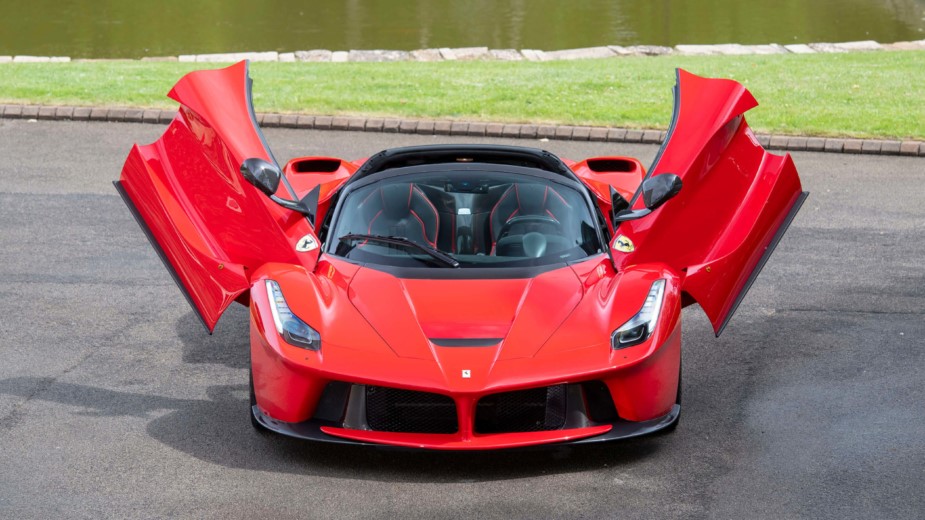
Toto Wolff’s La Ferrari.
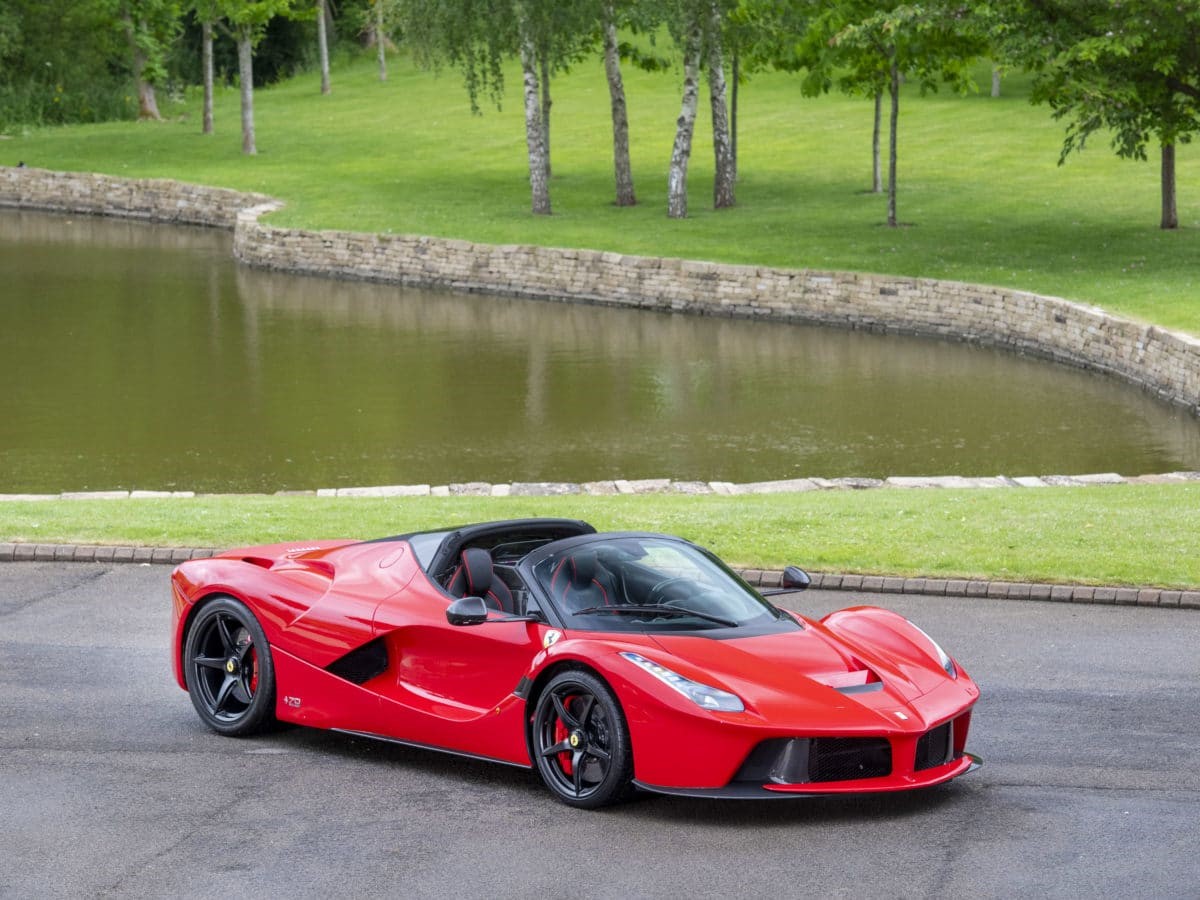
Toto Wolff’s La Ferrari.
2018 Ferrari LaFerrari Aperta – “Owned from new, has a total specification and covered just delivery miles.”
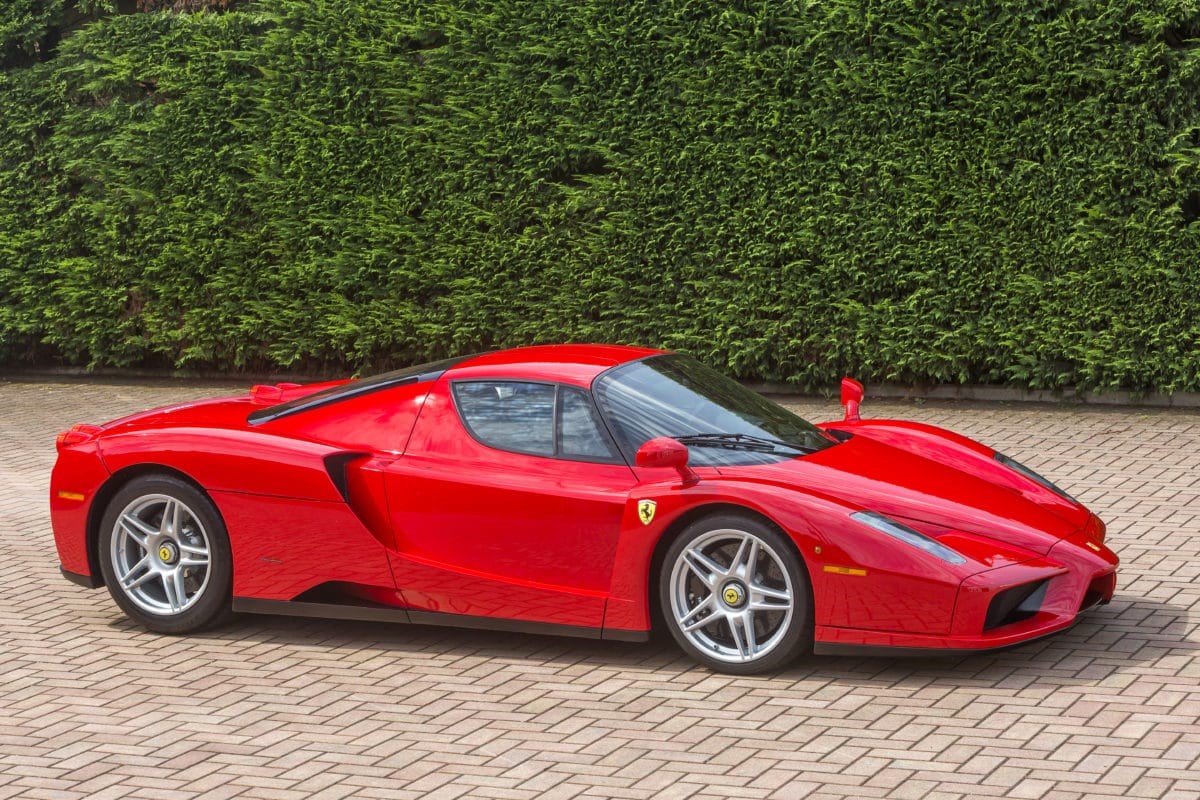
Toto Wolff’s Ferrari Enzo.
2003 Ferrari Enzo – “With just over 2,000 km that we know extremely well, having purchased it from the first owner in 2014 before Toto bought it in the September of that year.”
Prices for the aforementioned cars have not been publicly disclosed by Tom Hartley Junior, associated vendors, or any other reporting publications.
Videos
Ferrari
Mercedes
Toto Wolff
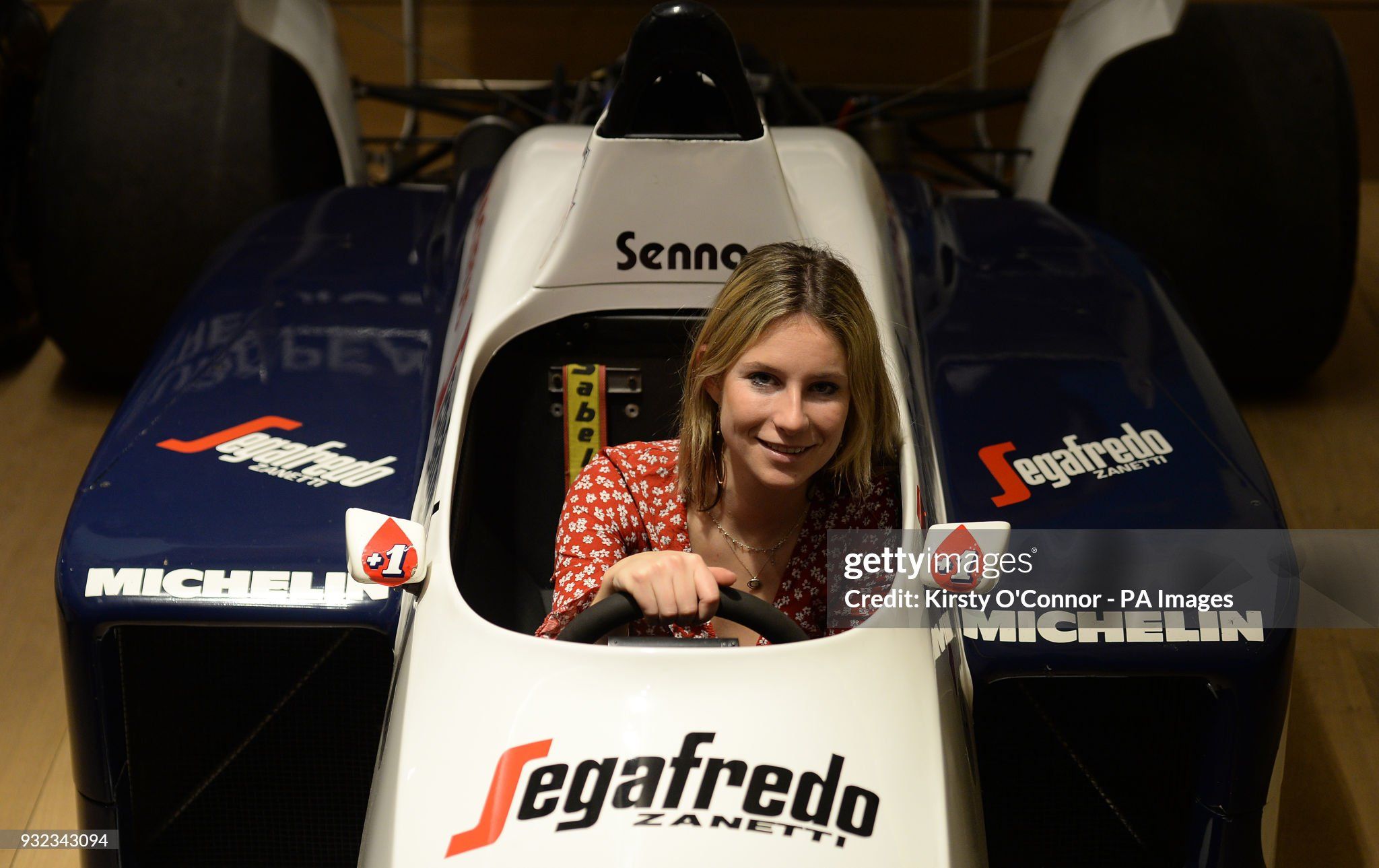
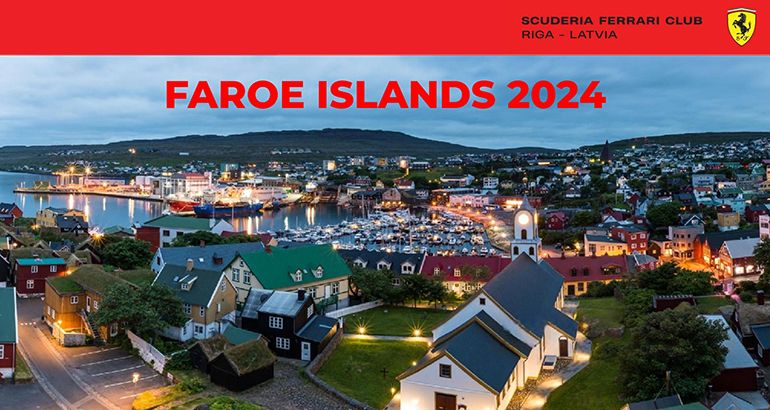
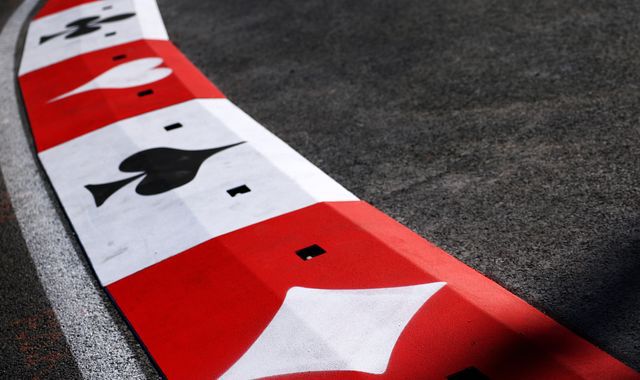
Comments
Authorize to comment